
Clinton Cawood details the most popular drinks in the UK’s top bars, as discovered by the CLASS Report 2025 - our poll of the bars that received votes in the Class Bar Awards.
50 Southside
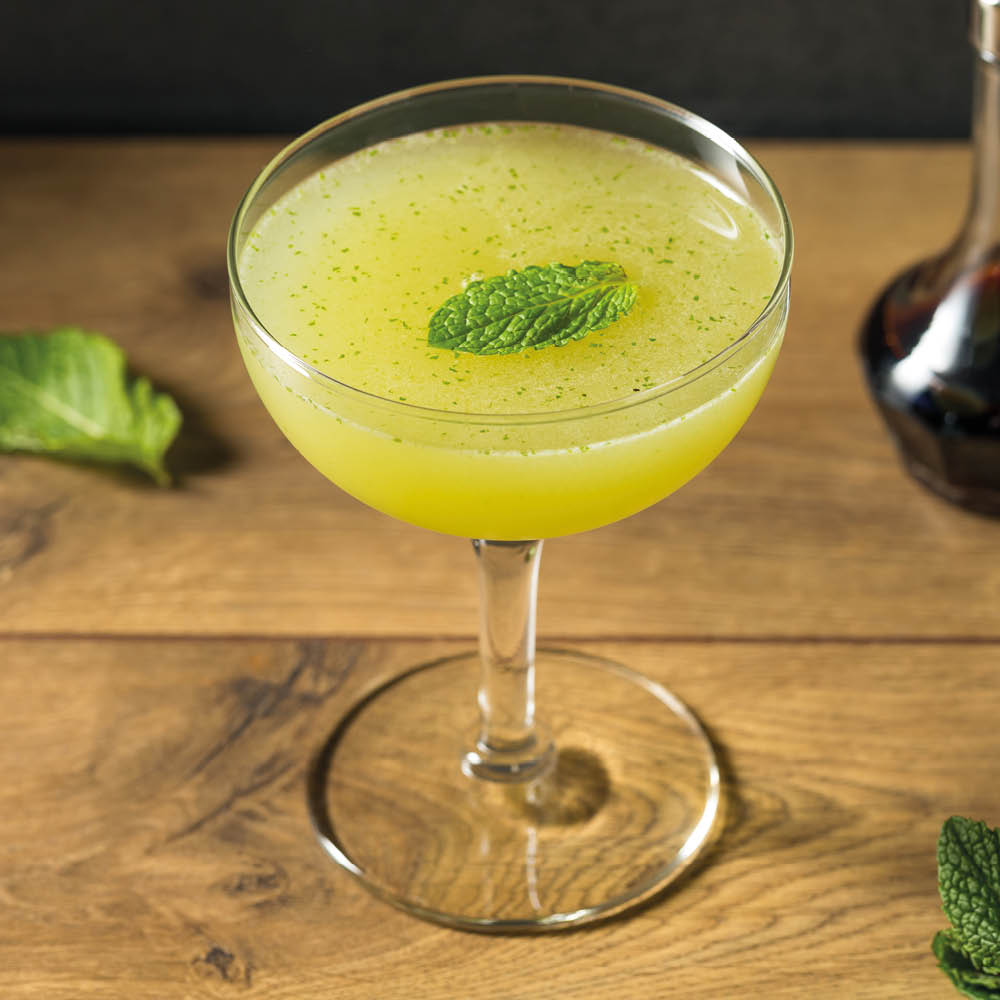
With the Mojito rising in the ranks this year, it’s only fitting that fellow mint-based cocktail the Southside makes an appearance too. The potential origins of this gin, lime, sugar and mint classic are as varied as they are inconclusive. We’ll likely never know whether its creator was Prohibition-era gangster Frankie McErlane, or if it had its origins at Long Island’s South Side Sportsmen’s Club or at former Manhattan speakeasy 21 Club. The Southside has its share of variations, and there are plenty of gin-based Mojitos out there too, such as the Strawberry & Basil number on the list at Marco Pierre White’s London restaurant Mr White’s.
49 Zombie
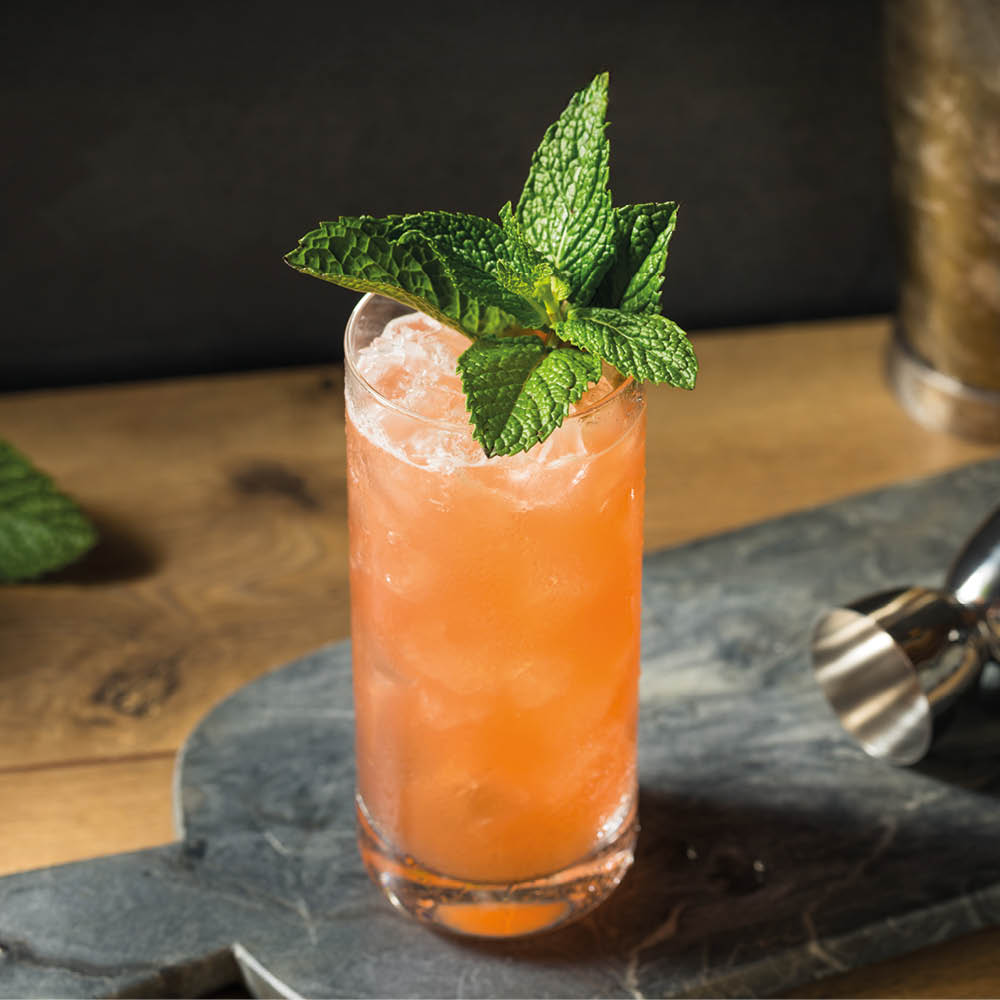
This famously boozy tiki classic dropped 36 positions on the list this year, but its legend prevails, inextricably linked with the policy at Don the Beachcomber – where it was created by Don Beach in the 1930s – limiting customers to no more than two each. The Pinup Zombie at London’s Laki Kane blends three different rums with absinthe, grenadine, agave, bitters, passion fruit and citrus. “Warning: Will Wake the Dead,” the menu reads, and if that doesn’t do it, the Zombie Shots – Wray & Nephew, La Fee Absinthe, a couple liqueurs and more – certainly will.
48 Gin Fizz

You can’t fault the staying power of the deceptively simple Gin Fizz, a cocktail that’s been around since the mid-1800s, and immortalised in print by Jerry Thomas, who called specifically for Holland gin.
The famously labour-intensive Ramos Gin Fizz, with additional cream and orange flower water, is one notable variant, emerging around 1888. The considerably more contemporary Frozen Banana Ramos, from London’s Murder Inc a few years ago, invited Jägermeister to the party, as well as an in-house ‘espresso mix’.
47 Between the Sheets

This early split-base cocktail likely emerged during Prohibition, and is generally considered to consist of rum, cognac and triple sec in equal proportions – although various combinations of spirits have been used over the years – together with a lesser quantity of lemon juice. Its origins, meanwhile, are a little muddy, with Harry MacElhone of Harry’s New York Bar in Paris among those who have played a part. The Coburg Bar at The Connaught lists a classic Between the Sheets on its menu, made with H by Hine cognac, Doorly’s white rum, Cointreau and lemon juice.
46 Bee’s Knees
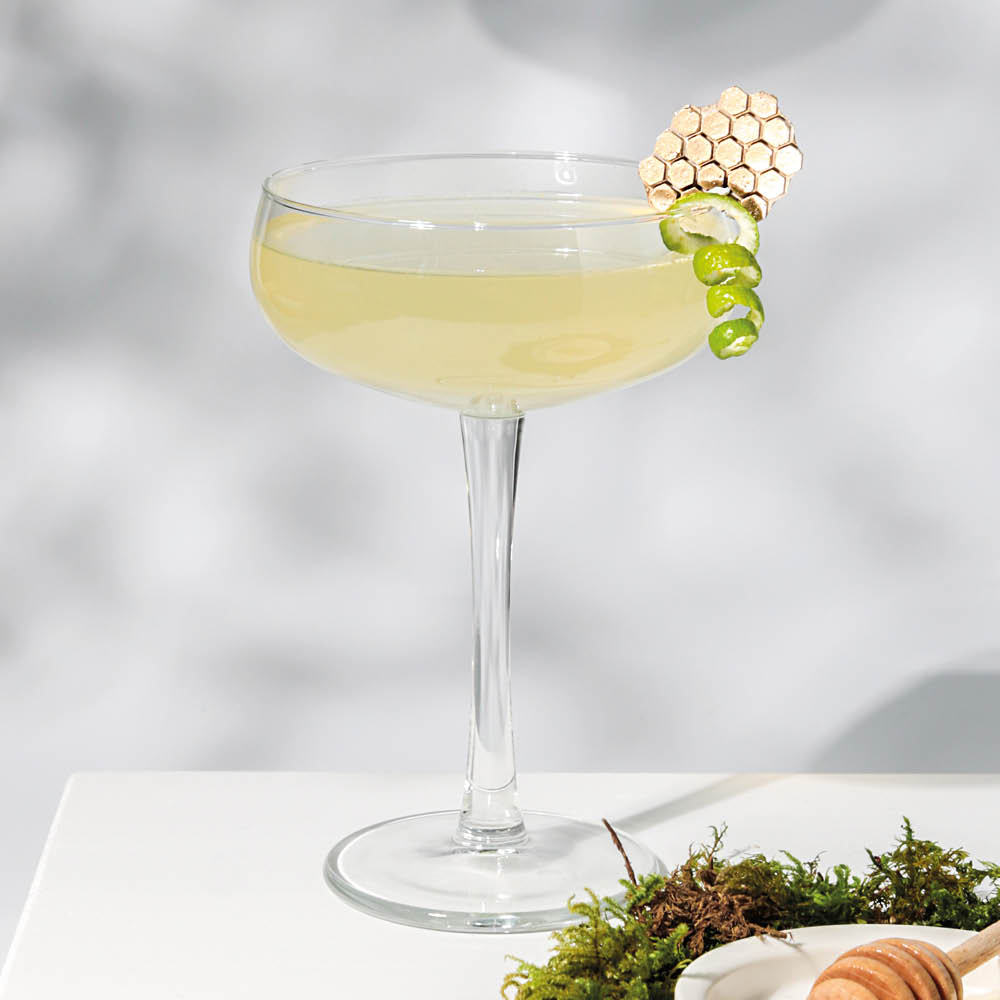
American socialite Margaret Brown, also known as Molly Brown, is among those credited with the invention of the Bee’s Knees – as if surviving the Titanic wasn’t enough of an achievement. It might also have been Frank Meier, head bartender at the Ritz in Paris in the 1920s, who first mixed this gin, honey and lemon cocktail. Regardless, the Bee’s Knees endures to this day, in classic form and in a variety of interpretations, such as the Yuzu Bee’s Knees at London’s Amaro Bar.
45 Painkiller
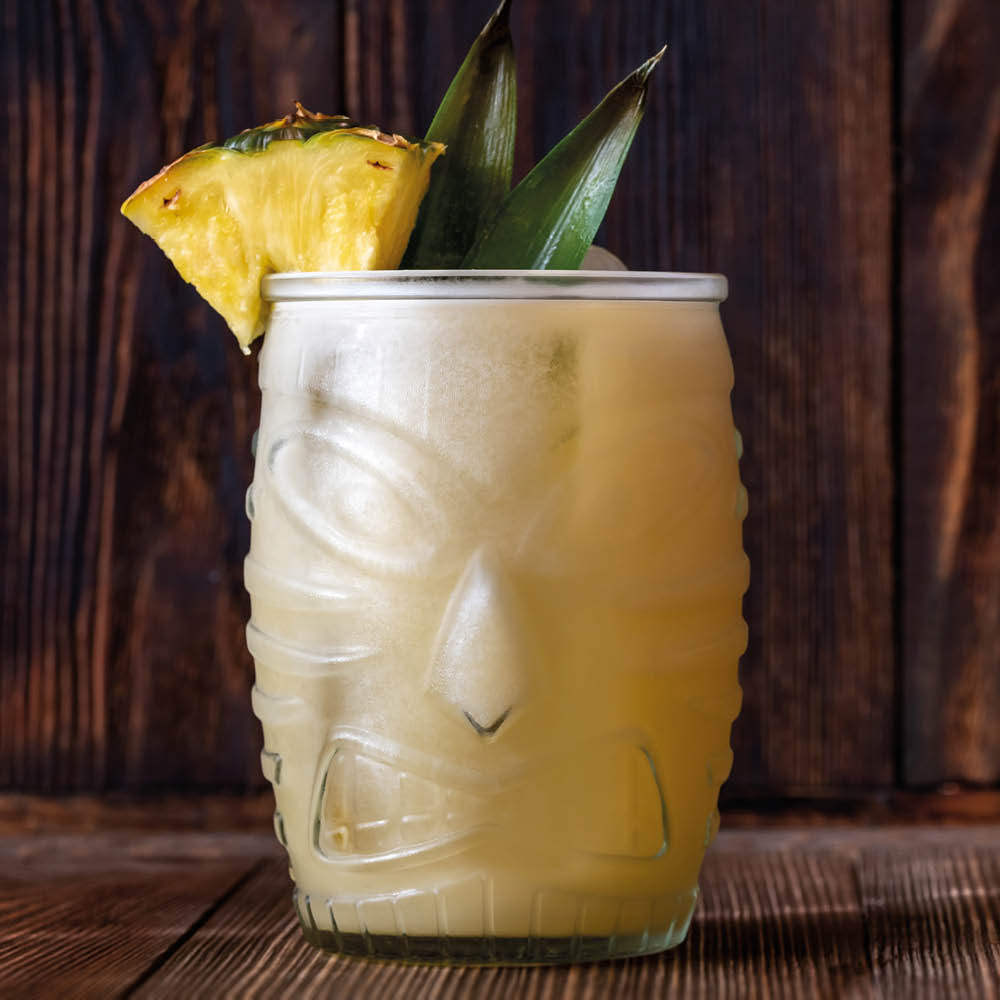
The six-seater Soggy Dollar Bar on a white beach in the British Virgin Islands – so named for the state of the currency in your pockets after wading ashore – gave birth to this classic in the 1970s, combining Pusser’s rum with cream of coconut, pineapple and orange. Pusser’s founder Charles Tobias was among the bar’s regulars, and it wasn’t long before the brand trademarked the drink. A few years ago, Lyaness in London created the Double Painkiller, using its Infinite Banana ingredient in concert with Bombay Sapphire, Bacardi Cuatro, toasted coconut, lemon and orange.
44 Old Cuban

Despite its name, the Old Cuban is actually rather new, although it does take plenty of inspiration from its seniors within the classic cocktail canon. When Audrey Saunders created it in 2001, she borrowed no small amount from the Mojito, while taking a leaf out of the French 75’s book too. Zoe Burgess includes a faithful rendition on her list at Double Standard at The Standard London, with Eminente Ambar Claro rum, lime, fresh mint, Angostura Bitters and Chapel Down Vintage Reserve.
43 Corpse Reviver 2
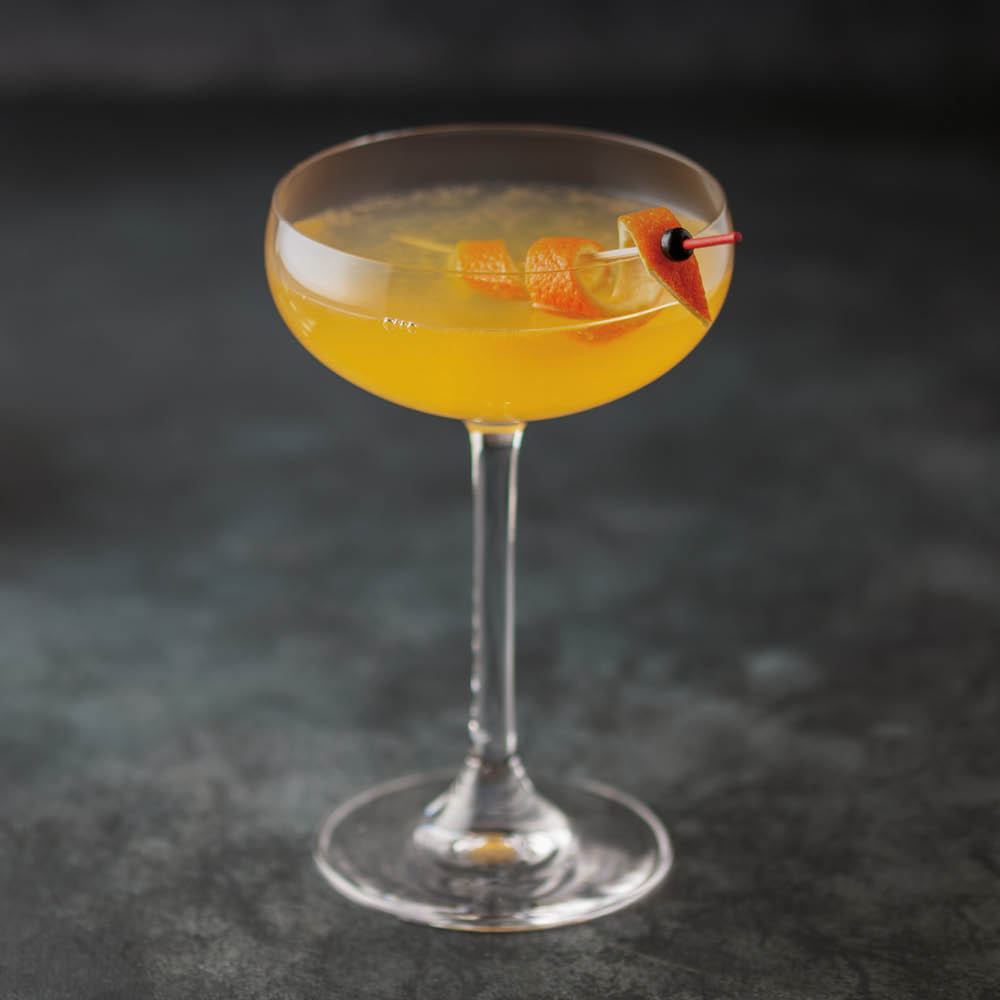
It’s always worth remembering the advice of bartender Harry Craddock, who invented or at least popularised this Corpse Reviver, writing in his 1930 The Savoy Cocktail Book: “Four of these taken in swift succession will unrevive the corpse again.” Its necromantic limitations notwithstanding, this is a fine classic in the grandest tradition, and an enduring one, combining gin, triple sec, Lillet Blanc and lemon juice in equal parts, finished with a dash of absinthe. For the full experience, order one – or as many as three – at the American Bar at The Savoy in London.
42 Caipirinha
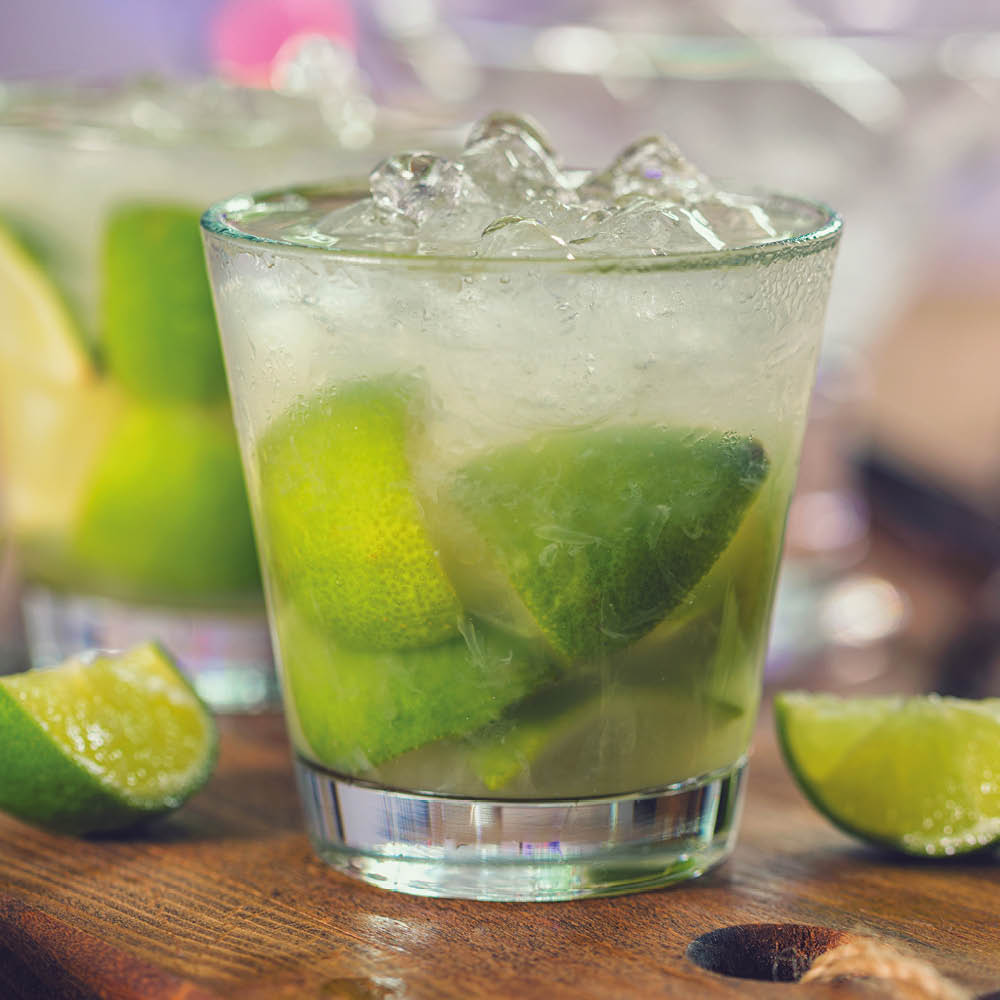
Effortlessly cool and low maintenance, the signature cocktail of Brazil, and of its national spirit cachaça, will always represent laid-back good times. As a style of drink – limes muddled with sugar directly in the glass before adding the spirit – it’s wonderfully versatile, and an excellent springboard for variations. Viajante 87 in London’s Notting Hill, as part of the Be Present section of its menu, offers a sharing-style Caipirinha serve, in either a 500ml or 1-litre carafe, complete with syrups and fresh fruit for customisation.
41 Picante de la Casa
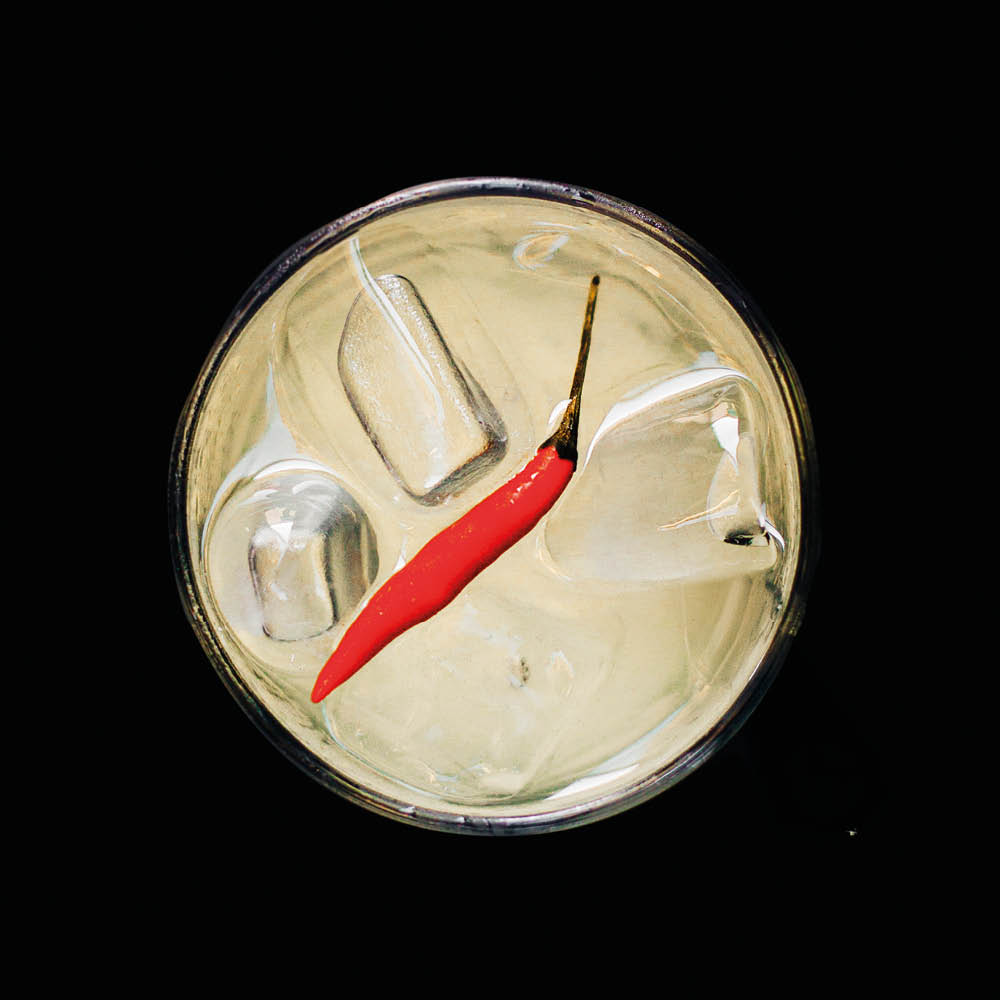
The Spicy Marg mania of recent years traces its origins to the advent of Soho House’s Picante de la Casa, first created in the US about a decade ago, but truly taking over elsewhere in recent years. It’s easy to recreate, rides on the popularity of the Margarita, and is open to interpretation for bars to create their own variants. The Soho House original is made by muddling a small piece of chilli in a tin before adding reposado tequila, lime juice, agave syrup and coriander. Shake, fine strain over ice and garnish with the top of a chilli pepper, stem upwards.
40 Baby Guinness

Ireland’s most famous stout is absolutely everywhere nowadays and, increasingly, so is this miniature shot version, consisting of layered coffee liqueur and Baileys. The Baby Guinness, possibly named for small bottles of the stout delivered to maternity hospitals for nursing mothers, might have been born at Dublin pub The Waxies Dargle (since closed, and incidentally the name of an Irish folk song performed by the Pogues) in the eighties – but there are competing stories. If you’re only after a small measure of actual Guinness, Portobello Star in London serves the black stuff in a Martini glass, although they’ll also pour you a pint, and a Baby Guinness too.
39 Pisco Sour
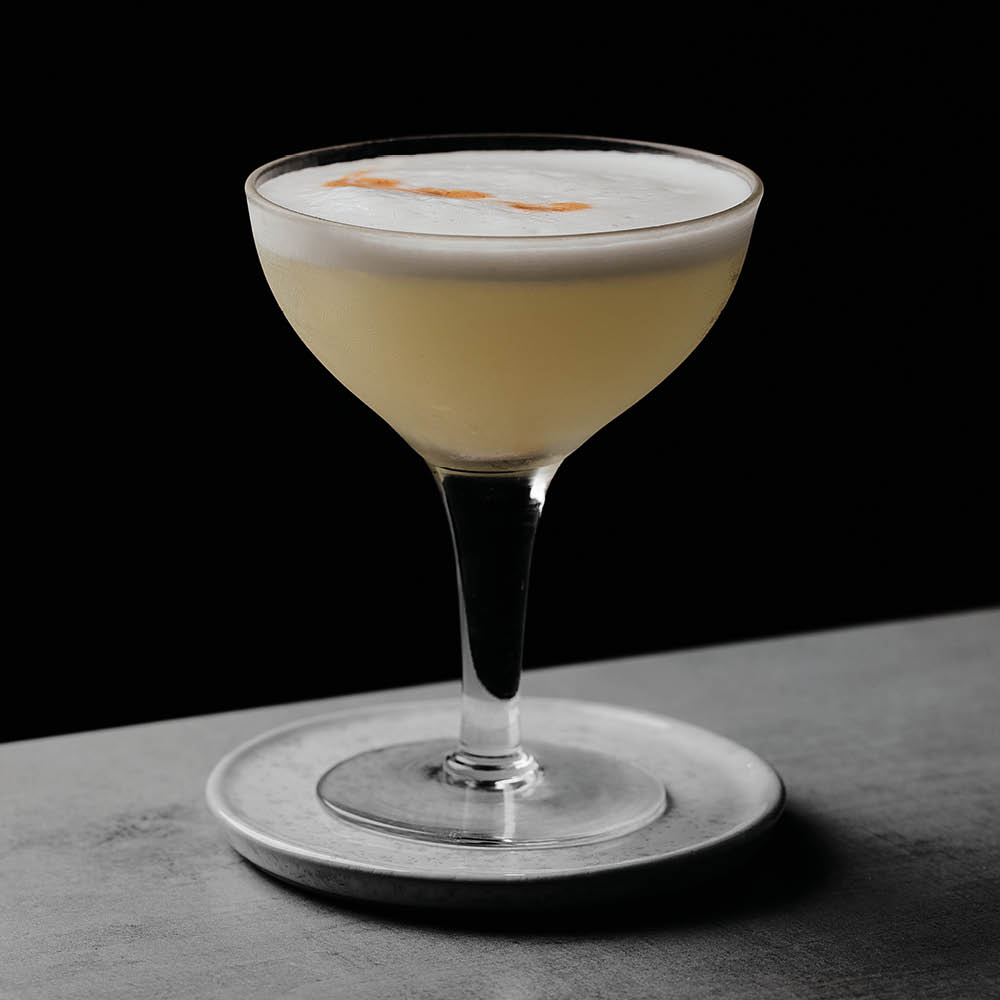
Victor Vaughen Morris is generally considered to be the progenitor of Pisco’s signature cocktail, an American bartender who arrived in Peru in 1903 and opened Morris’ Bar in the capital of Lima. A pinch of salt is warranted here though, with compelling evidence that the drink already existed in the country before 1903. For an upmarket yet traditional take in London, head to The Pisco Bar at Coya Restaurant, where there’s an abundance of other pisco cocktails to explore too.
38 Irish Coffee

It’s fitting that such a well-travelled classic should have its origins in an airport, or rather Foynes Flying Boat Port near Limerick in Ireland, where bartender and chef Joe Sheridan is said to have served the very first Irish Coffees to some stranded passengers on a stormy night. Its decline on this year’s list – a full 24 places from 14th – could be attributed to the rise of competing coffee cocktails, the Carajillo among them, but a visit to Swift in London should be enough to dispel any doubts.
37 Long Island Iced Tea
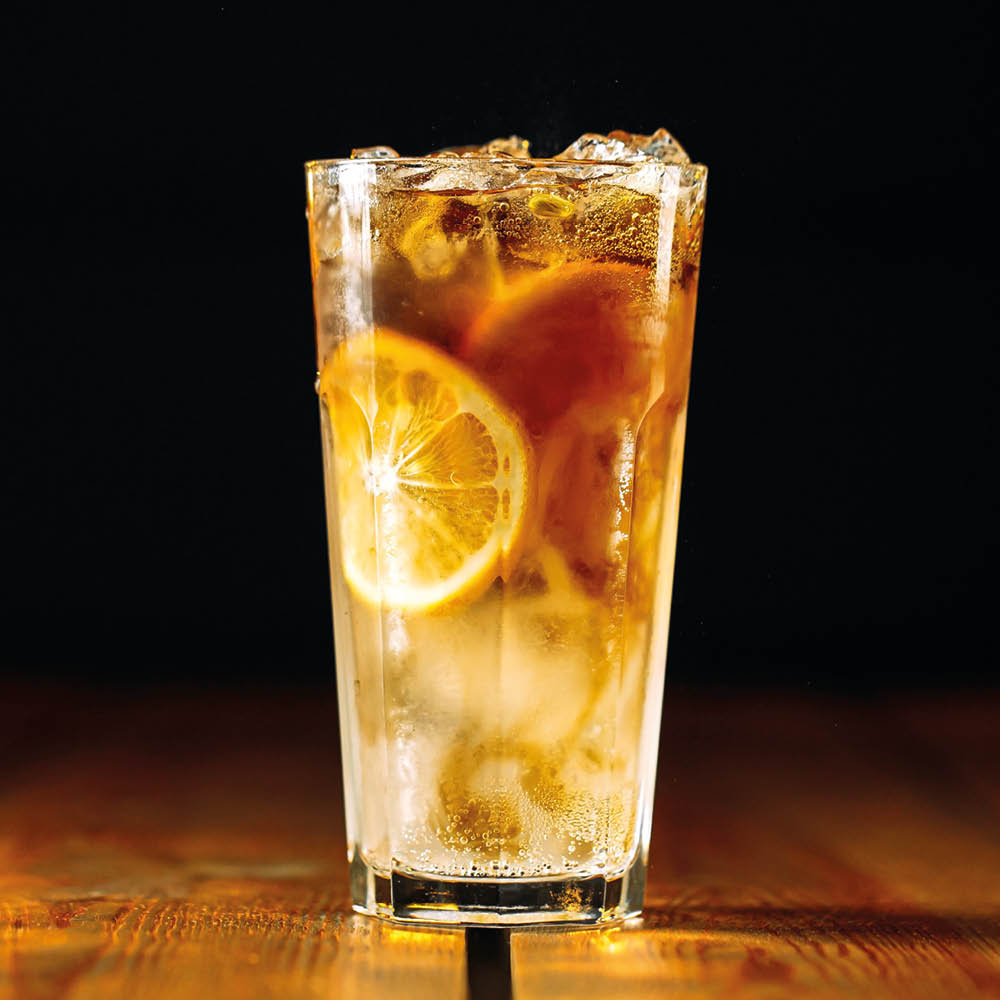
As one of the classics most commonly associated with consumption for consumption’s sake – although the Zombie in 49th place this year is no poster child for responsible drinking either – this one flies in the face of moderation trends, even though it doesn’t generally contain more actual units than the average cocktail. Among those who claim to have invented it is Robert ‘Rosebud’ Butt, who says he came up with the mix of four spirits, triple sec and cola for a cocktail comp in 1972.
A few years back, the since-closed Skylight Tobacco Dock in London offered an East London Iced Tea, with four spirits, Cointreau and cranberry juice.
36 Dark ’n Stormy
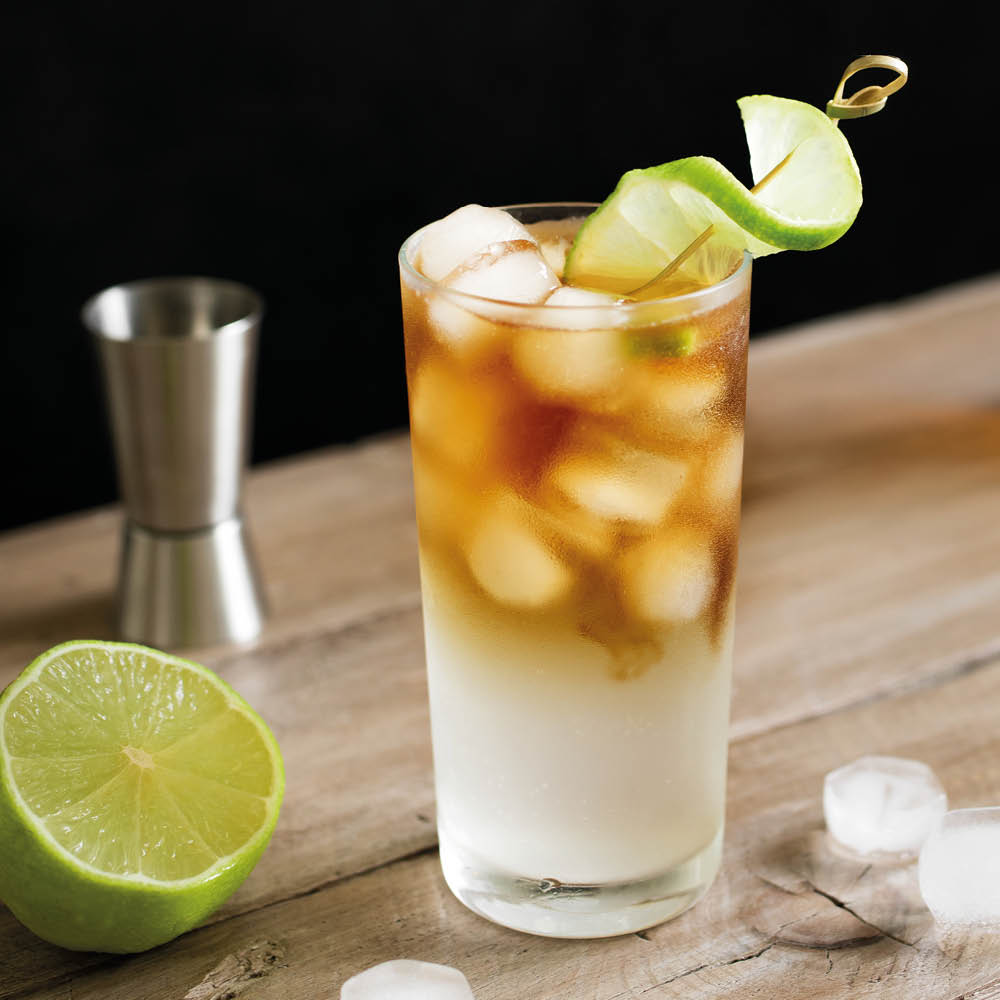
It’s unlikely we’ll ever know who first fortified their ginger beer with rum, but it wasn’t until the 1970s that Bermuda rum Goslings trademarked the name Dark ’n Stormy. The drink, popular in Bermuda well before Prohibition in the US, was a hit with Americans visiting while the Volstead Act was in effect – understandably so – and they brought the combination home after repeal. Alastair Burgess, of Happiness Forgets in London and No Nuisance in St Albans, has a contemporary take, the Perfect Storm, with Skipper dark rum, plum brandy, fresh ginger, lemon and honey.
35 Paper Plane
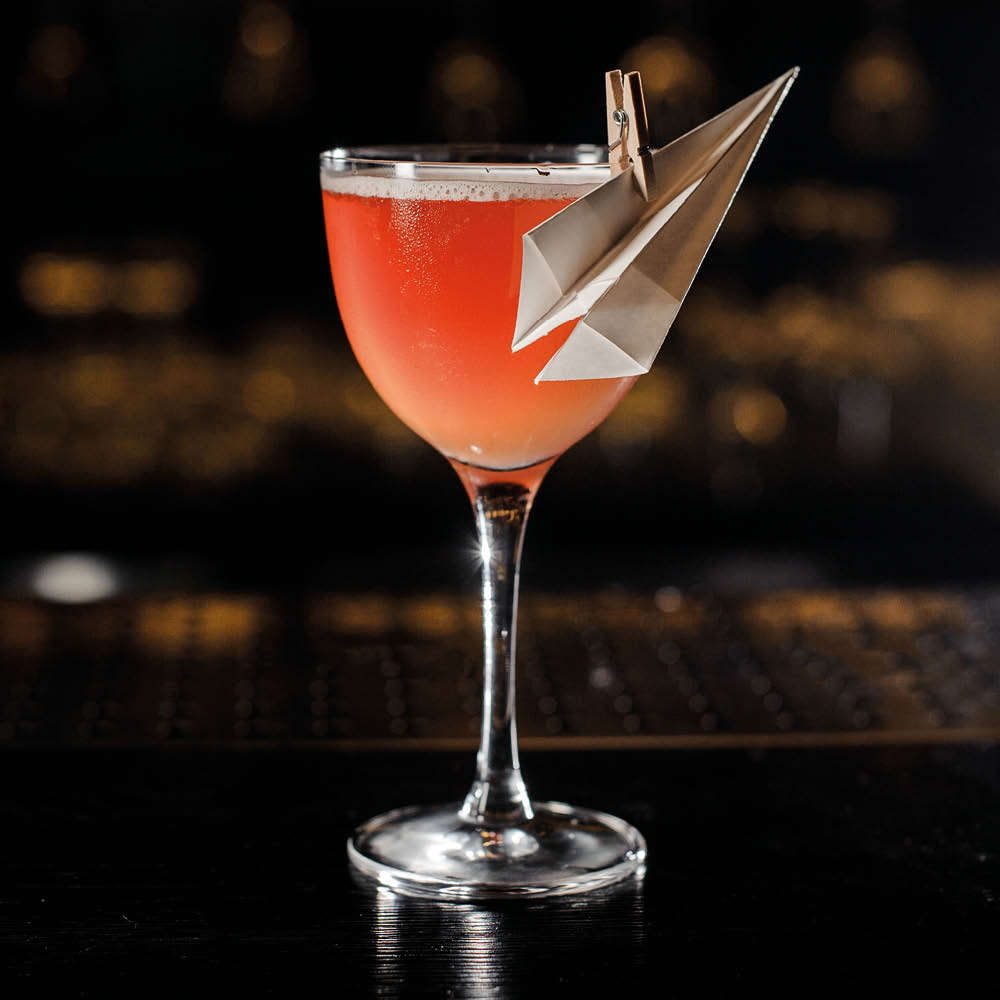
Sam Ross, the same former Milk & Honey bartender responsible for the Penicillin at number 23 on this year’s list, created this contemporary classic for the opening of Chicago’s The Violet Hour in 2008. It’s also amongst the ranks of highly-successful Last Word riffs, including Joaquín Simó’s Naked & Famous, ranked 19 this year. With the same equal-parts ratio as the original, the Paper Plane calls for bourbon, Aperol, amaro and lemon juice. London’s Scarfes Bar offers the next iteration, the Paper Glider, with Highland Park 12, Aperol and a peach and maple verjus.
34 Moscow Mule
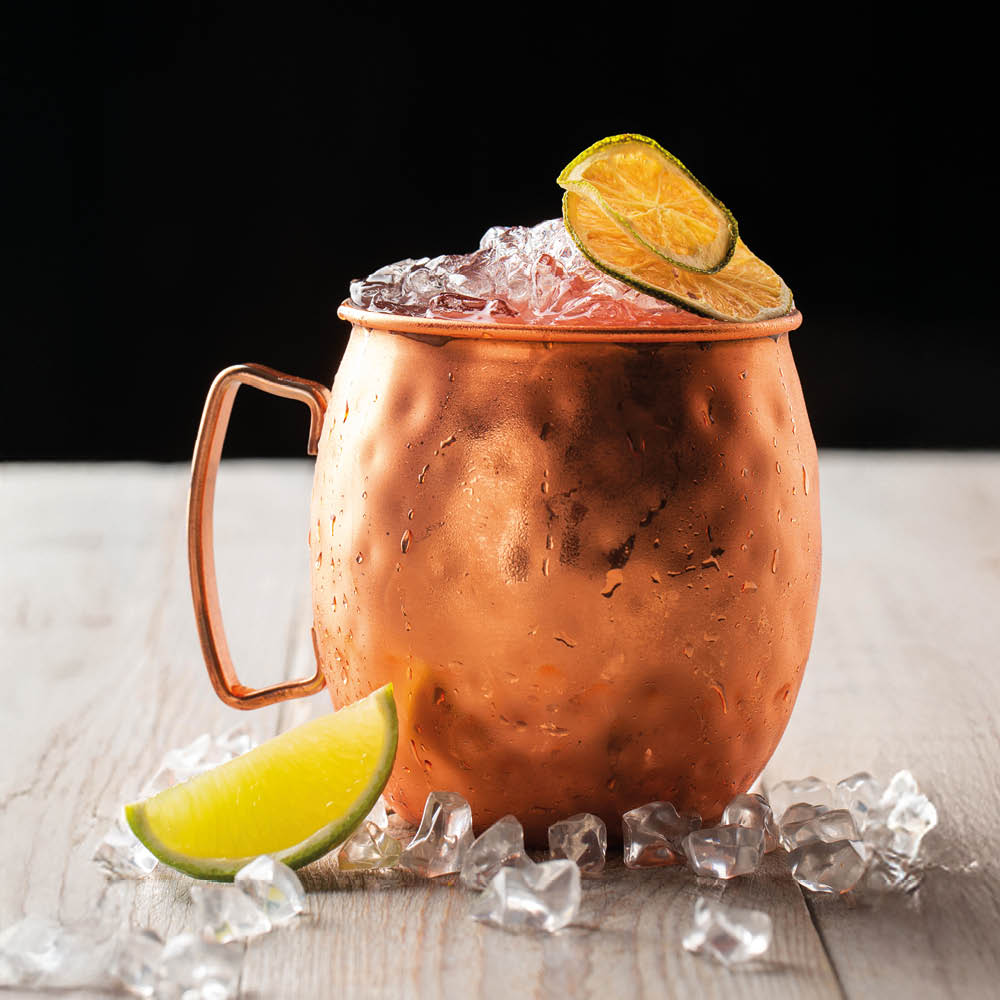
With one of the best – and suspiciously tidy – cocktail origin stories, the Moscow Mule emerged, apparently, from a chance meeting between John Martin, who had recently acquired the rights to Smirnoff Vodka, Jack Morgan, proprietor of Hollywood’s Cock ’n’ Bull pub who was attempting to launch a ginger beer brand, and Sophie Berezinski, in possession of a large quantity of copper mugs from her father’s factory in Russia. The Nickel Bar at The Ned in London has an inventive take at the moment, the Golden Mule, with Grey Goose, Axia, kumquat, clementine, ginger, citrus and soda.
33 Bramble
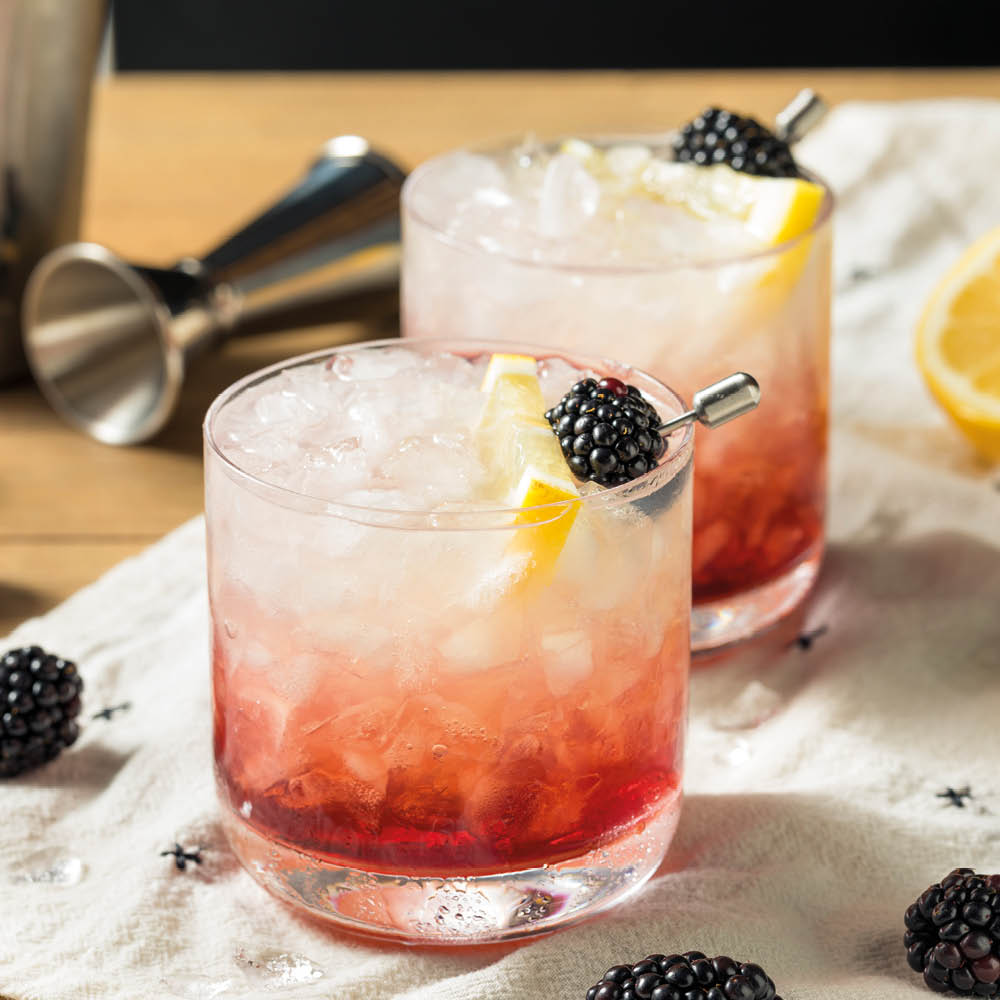
Joining the Espresso Martini is another inspired contribution to the classic cocktail canon from the legendary late Dick Bradsell, this time with a gin base, joined by lemon juice and sugar syrup over crushed ice, drizzled with crème de mûre. Created while Bradsell was working at Soho members’ club Fred’s in the 1980s, the idea was to create a distinctly British cocktail. In addition to still being found on cocktail lists around the world, and inspiring various riffs, it lends its name to the Edinburgh bar, where it holds pride of place as the first cocktail on the list – a combination of East London Liquor Co Gin and the bar’s own Lucky Bramble Liqueur.
32 Piña Colada
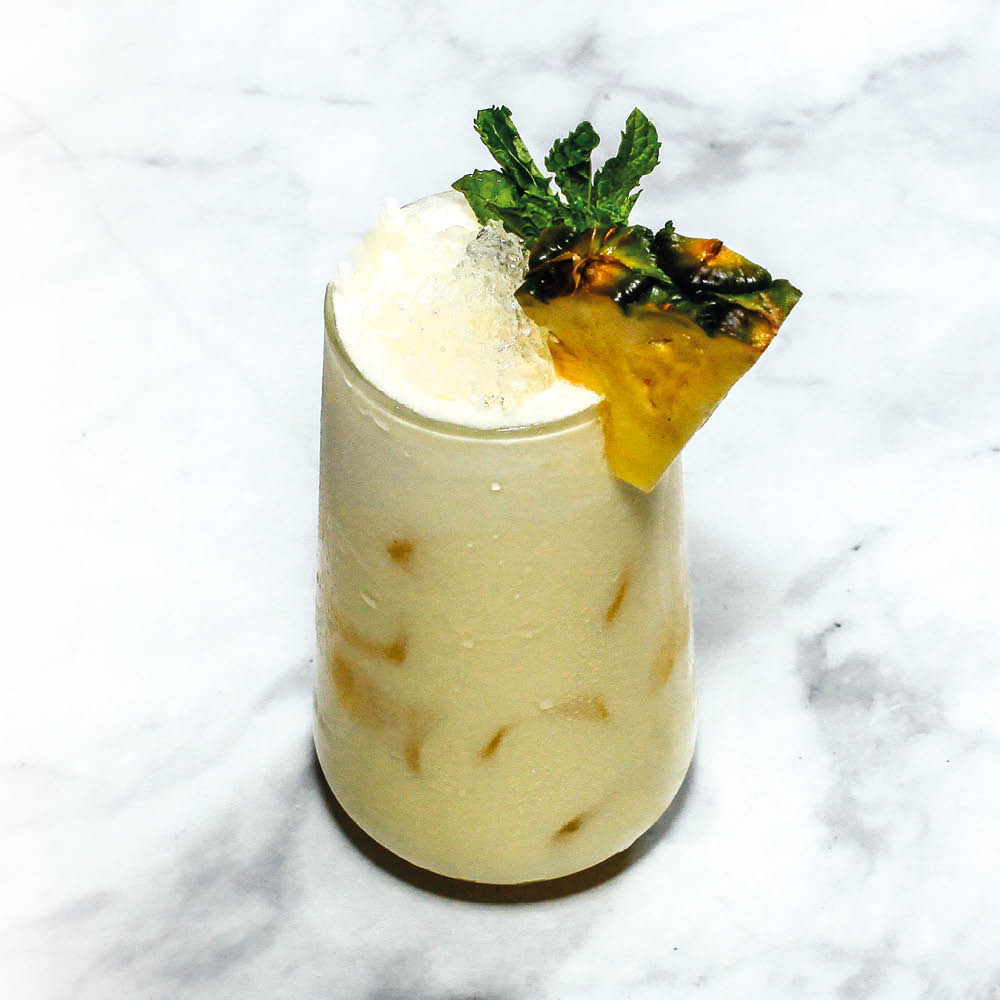
After a triumphant return to form in recent years, the Piña Colada has tumbled a dramatic 21 places in this year’s list, although there will always be those who like it – along with getting caught in the rain. The drink almost certainly hails from Puerto Rico, although when it comes to its creator there are at least three bartenders with credible claims. Among those raising its profile in recent memory is Coupette in London’s Bethnal Green, whose Champagne Piña Colada combines rum and champagne with coconut sorbet and pineapple cordial.
31 Bellini
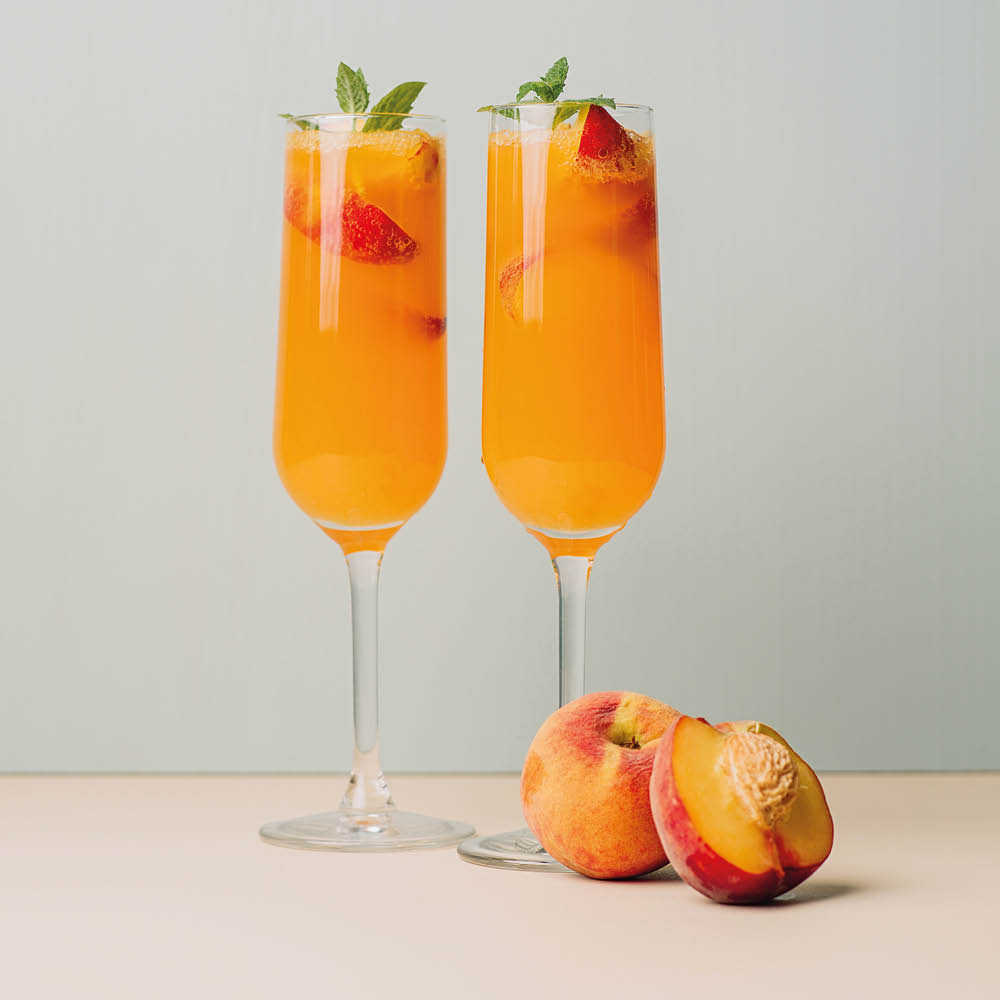
Refreshing not only in character, but also in the clarity of the facts surrounding its creation, the Bellini – that elegant combination of peach purée and prosecco – was created in 1948, most agree, in Venice by Giuseppe Cipriani, owner of Harry’s Bar. Still served at that original bar to this day, it has gone on to be the inspiration for countless variations too. The latest menu at Seed Library in London, for example, features an experimental riff, the Breakfast Bellini, with Patrón tequila, century beans (think century eggs, but not), breakfast fruits and champagne.
30 East 8 Hold-up
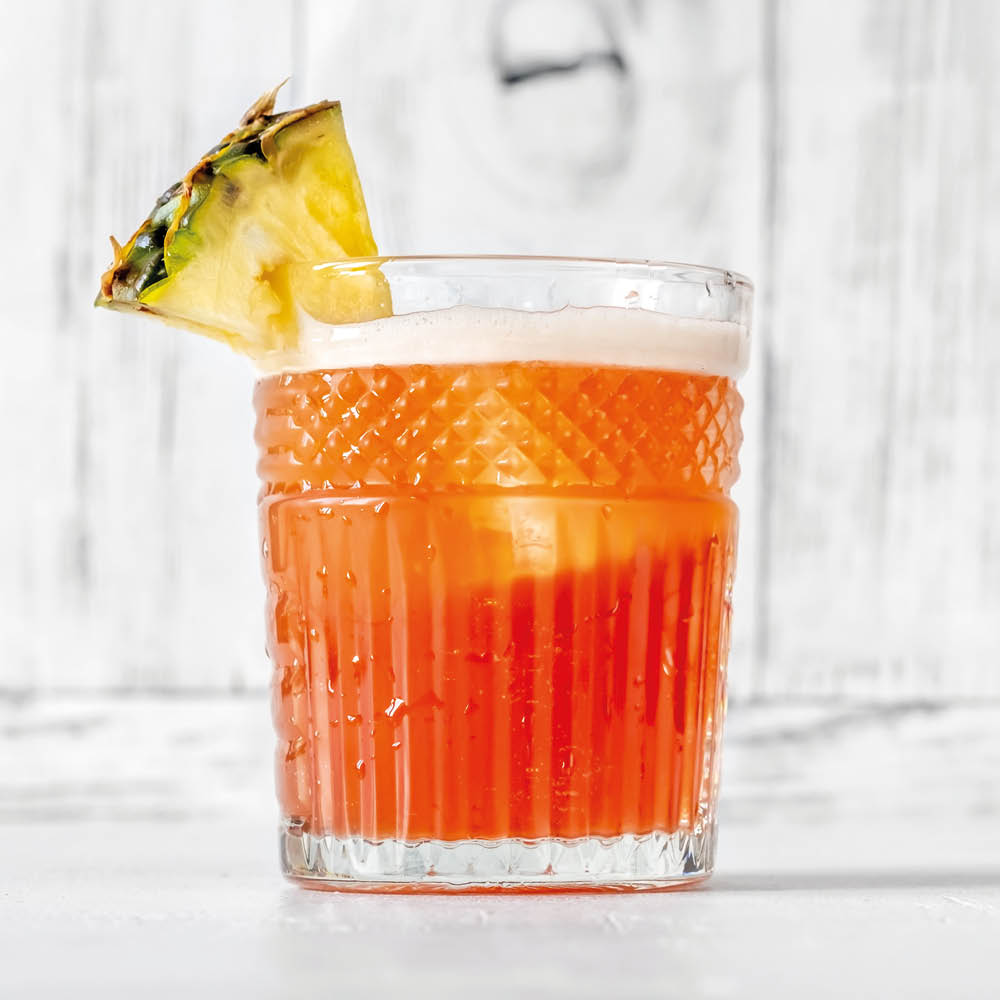
Kevin Armstrong was working at London’s Milk & Honey in 2006 when he created the East 8 Hold-Up, pairing vodka with Aperol, passion fruit syrup and pineapple and lime juices. The name, meanwhile, was inspired by an attempted mugging of fellow bartender Sam Jeveons in London’s E8. The cocktail was a hit, remaining on the list at Milk & Honey until it regrettably closed in 2020. Although the list changes daily at Satan’s Whiskers – Armstrong’s bar in London’s Bethnal Green – the East 8 has been known to make an appearance from time to time.
29 Mai Tai
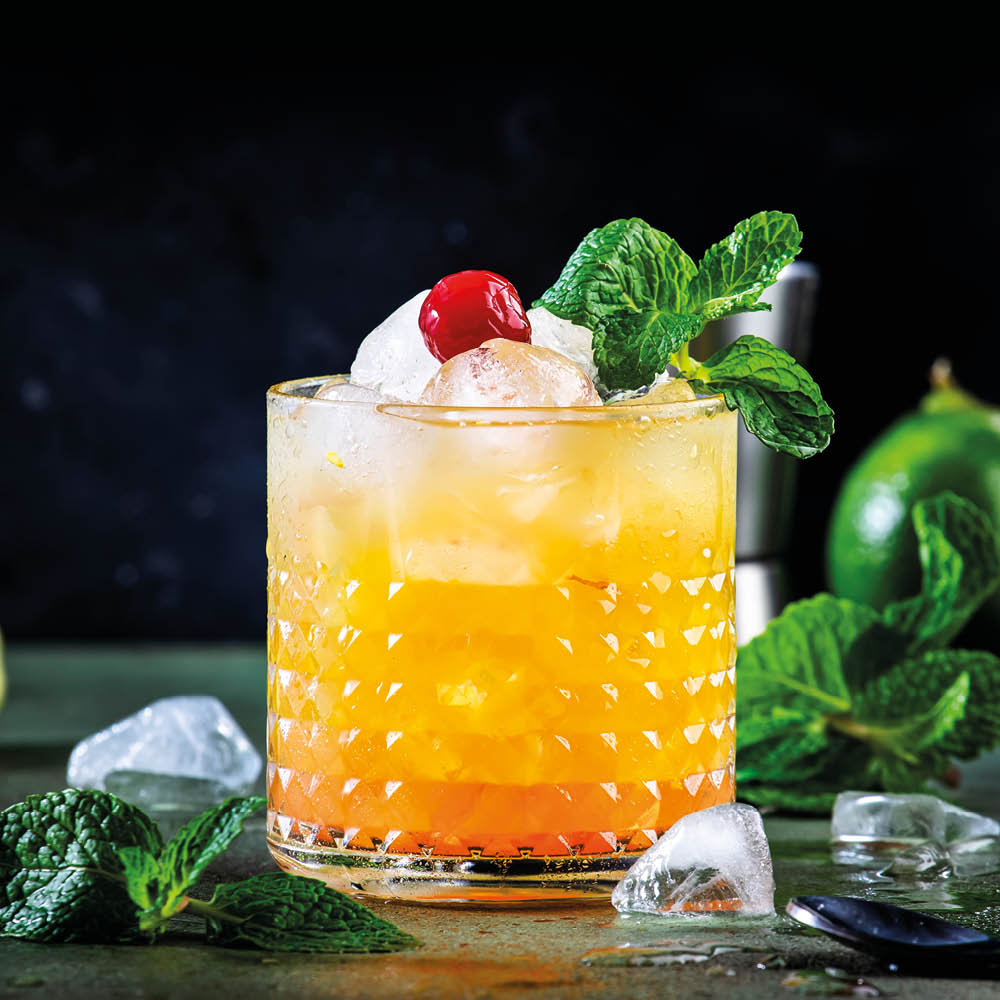
At its best, this most famous of tiki classics is certainly deserving of the Tahitian phrase said to have inspired its name, “mai tai-roa aé” or “out of this world – the best”. Victor Jules Bergeron, or Trader Vic, was foremost among those who claimed to have invented it, although he certainly wasn’t the only one. An exemplary modern take can be found on the Isle of Man, at Kiki Lounge, where it is made with a trio of rums – local Hurricane Overproof Manx Rum from Outlier, Clément Ambré Rhum and Chairman’s Reserve Legacy.
28 Gimlet
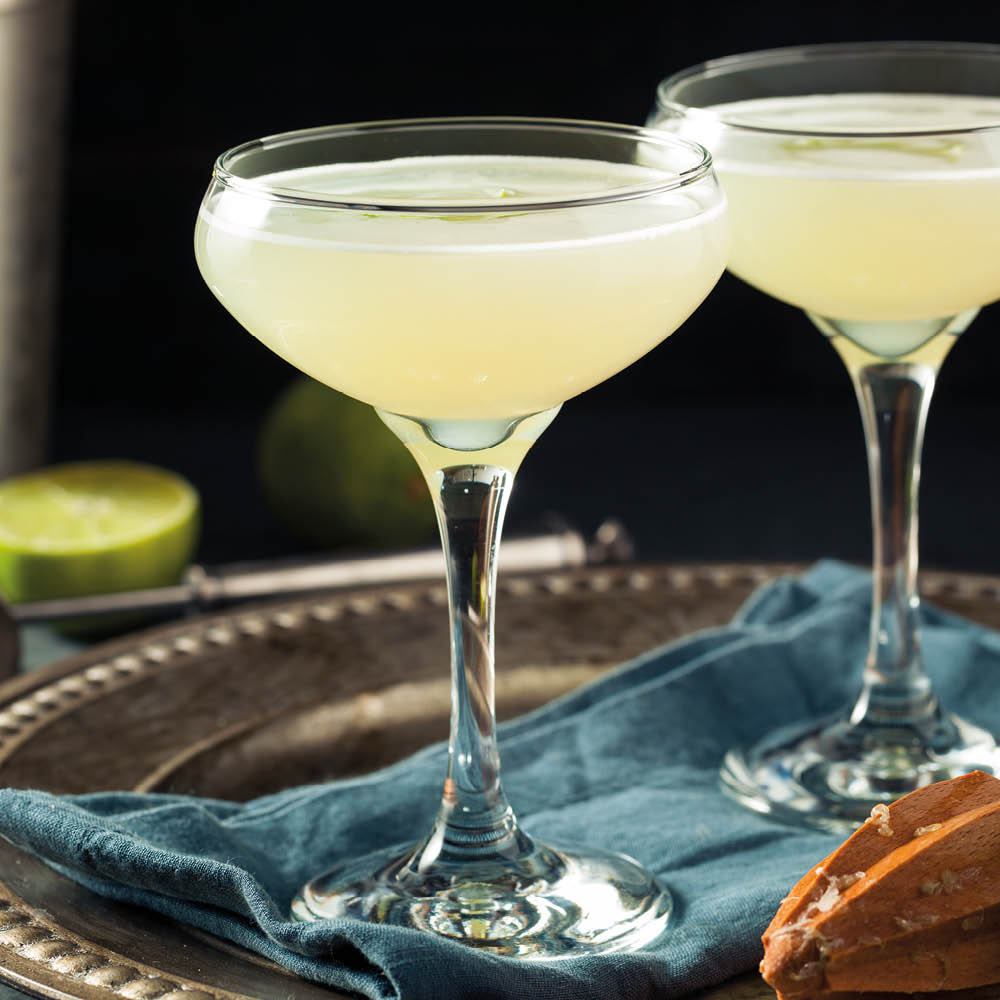
Having far outlived its original purpose as a scurvy preventative for the Royal Navy, the Gimlet has proven to be a versatile classic, found on modern cocktail lists in various forms. Back in the late 1800s when it emerged, it was made with Rose’s Lime Cordial, the first-ever fruit concentrate, but that ingredient is largely optional nowadays, with many contemporary bartenders replacing it with other cordials or fresh juice. At London’s Tayer + Elementary, the excellent Palo Santo Gimlet is made with gin, fino sherry, Lillet Blanc and palo santo cordial.
27 Last Word

We might have lost the Last Word to the mists of time if it weren’t for a few key figures in its history, and we’d be poorer for it. Among its champions was vaudeville actor Frank Fogarty, who visited the Detroit Athletic Club – where it was likely invented – in 1916 and, more recently, bartender Murray Stenson who revived the forgotten classic in the early 2000s. At Edinburgh’s Last Word Saloon the bar’s namesake is first on the cocktail list – much like the Bramble at its sister bar – and it’s a damn fine example of it too.
26 Vesper
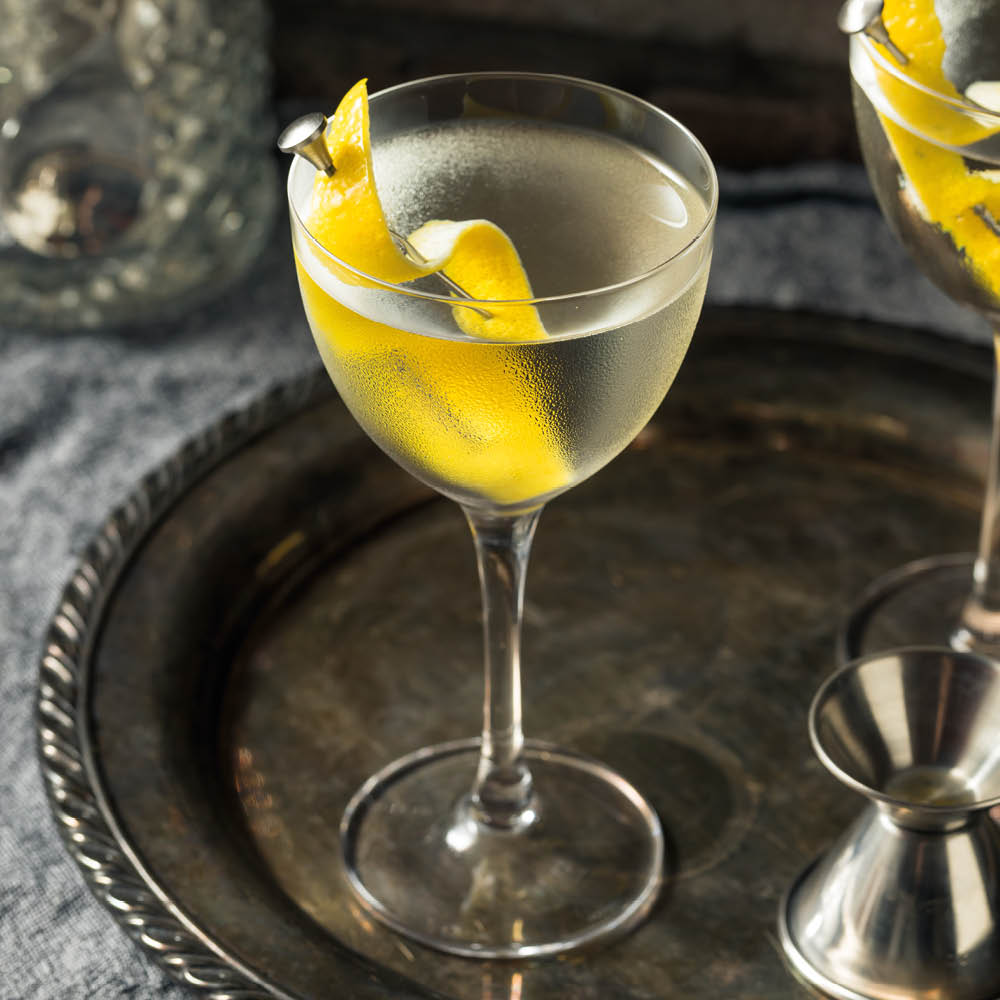
Buoyed no doubt by the Martini’s current popularity, this split-base classic is having a moment too. Its introduction to the world was via the first James Bond novel, Casino Royale, in 1953. The spec, in case you haven’t read the book, is three parts gin to one part vodka, and half a part of now-discontinued Kina Lillet, with a slice of lemon peel in a deep champagne goblet. And yes, it’s shaken. No prizes for guessing that it’s the signature drink at the Vesper Bar at The Dorchester in London, with the base spirits joined by re-distilled Forbidden Fruit liqueur and amontillado sherry Del Duque 30 year old.
25 Mezcal Margarita
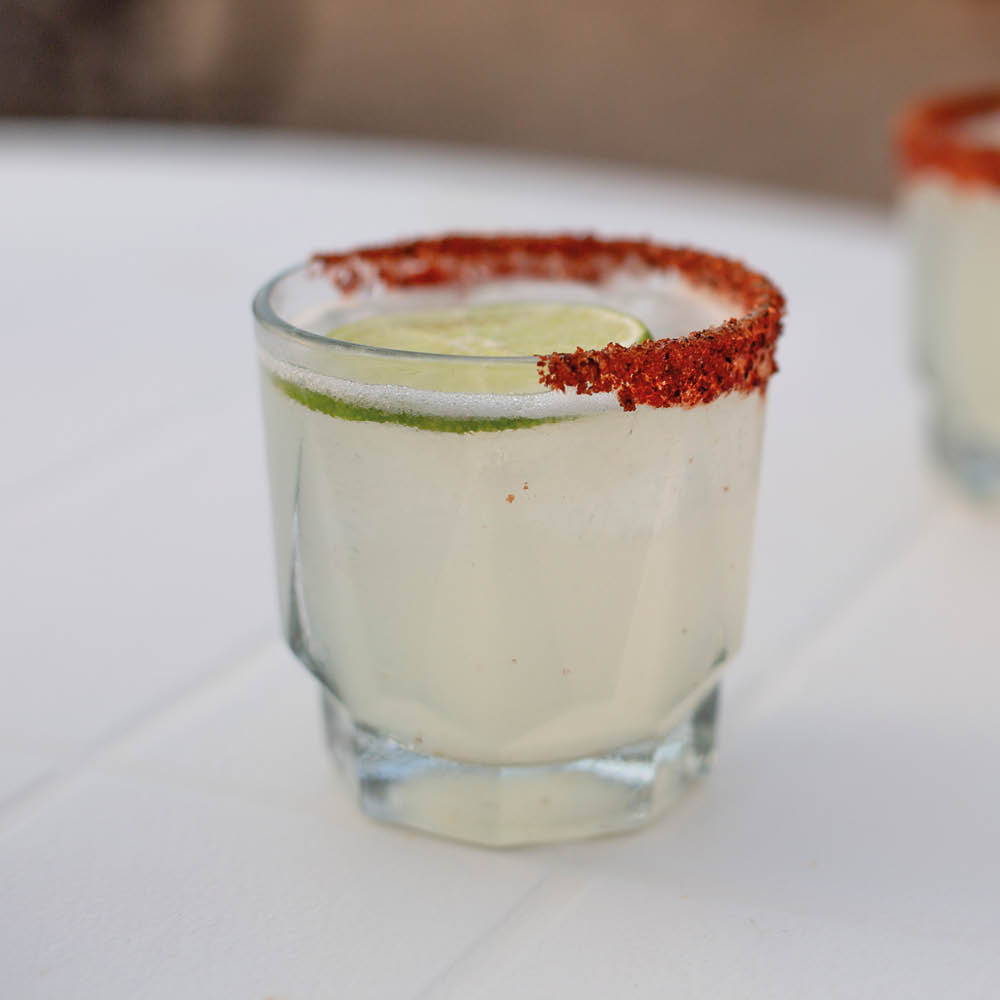
Of the many modifications made to the Margarita, replacing the base spirit with mezcal is certainly among the finest. Resulting in a drink that’s punchier and arguably more complex, sometimes smoky, it’s a simple yet inspired substitution that has been on the rise in recent years along with mezcal itself – either as a classic Margarita with triple sec or in Tommy’s form with agave syrup. London mezcal specialist Kol invariably has a Sour-style drink on the list, and will certainly make you an off-menu Mezcal Margarita on request.
24 Sazerac
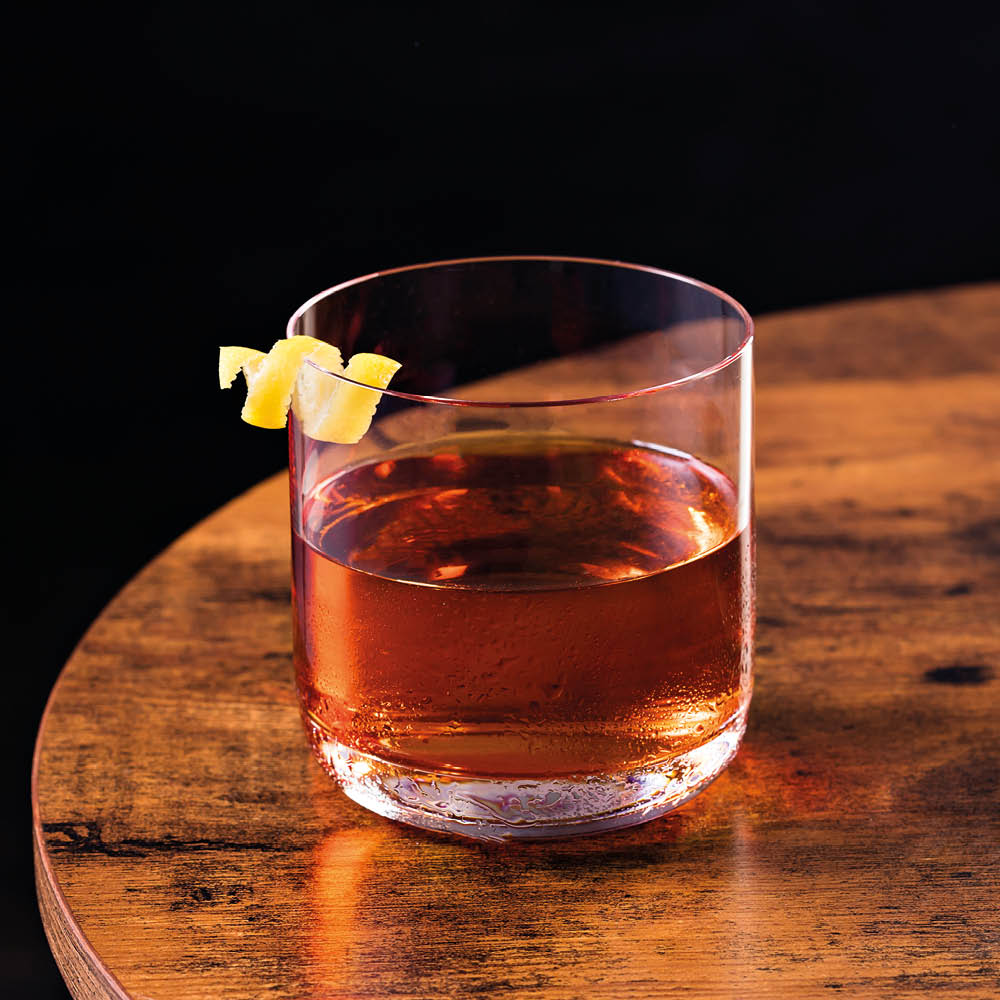
The Sazerac comes to us almost unchanged from its birthplace in the New Orleans of the mid-1800s, a switch in base spirit from cognac to rye thanks to phylloxera notwithstanding. Nowadays it’s not uncommon to see both spirits used together. This venerable classic has provided inspiration for a number of noteworthy riffs recently, not least the Sazzaquack at Three Sheets in London’s Soho, served in a duck glass of course, or the Sazerac de Nata at nearby Archive & Myth, complete with absinthe-cured egg.
23 Penicillin
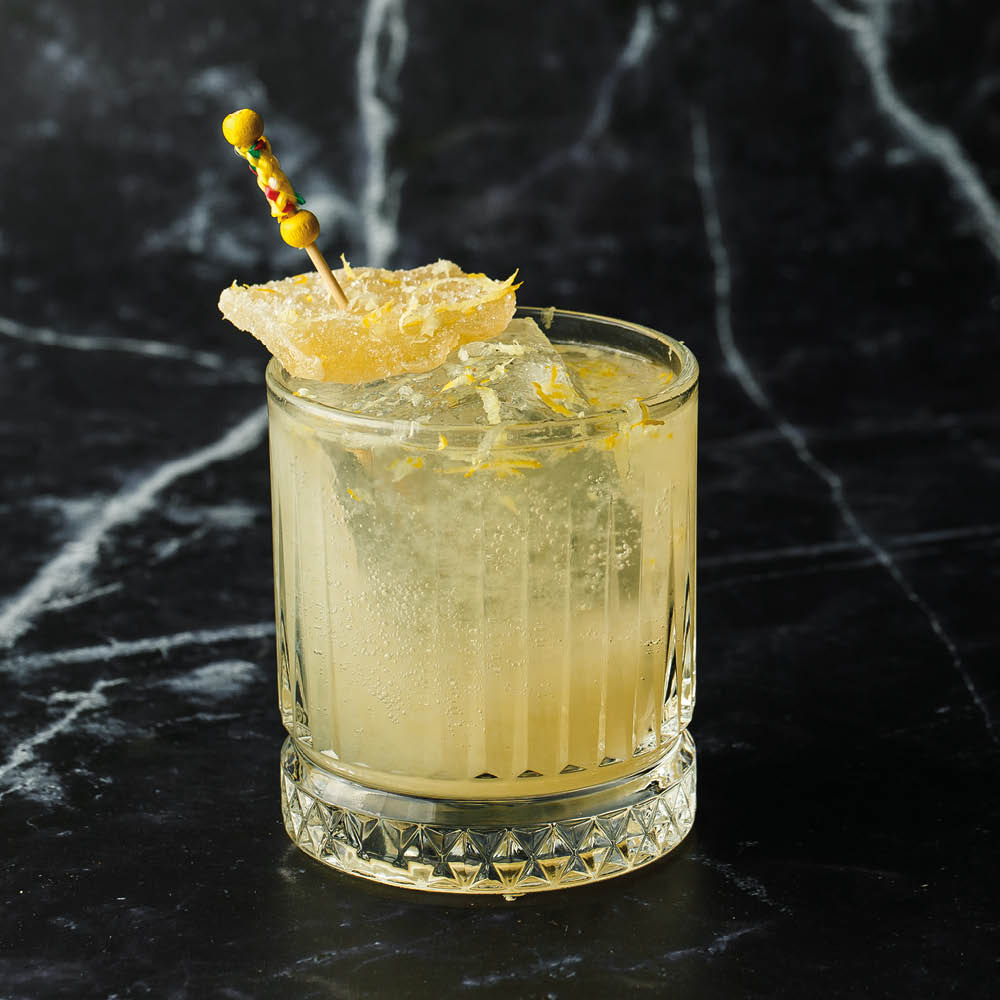
Among the ranks of neo-classic cocktails, the Penicillin – a Sour-style drink with ginger and honey, and a peaty single malt float – is among the most timeless, but was actually created just a couple of decades ago. Sam Ross is responsible, while working at New York’s Milk & Honey, taking inspiration from another of the bar’s creations, the Gold Rush. The version found on the list at Schofield’s Bar in Manchester is faithful to the original, made with Dewar’s 12, sweetened ginger juice, honey syrup, lemon juice and a Caol Ila 12 float.
22 French Martini
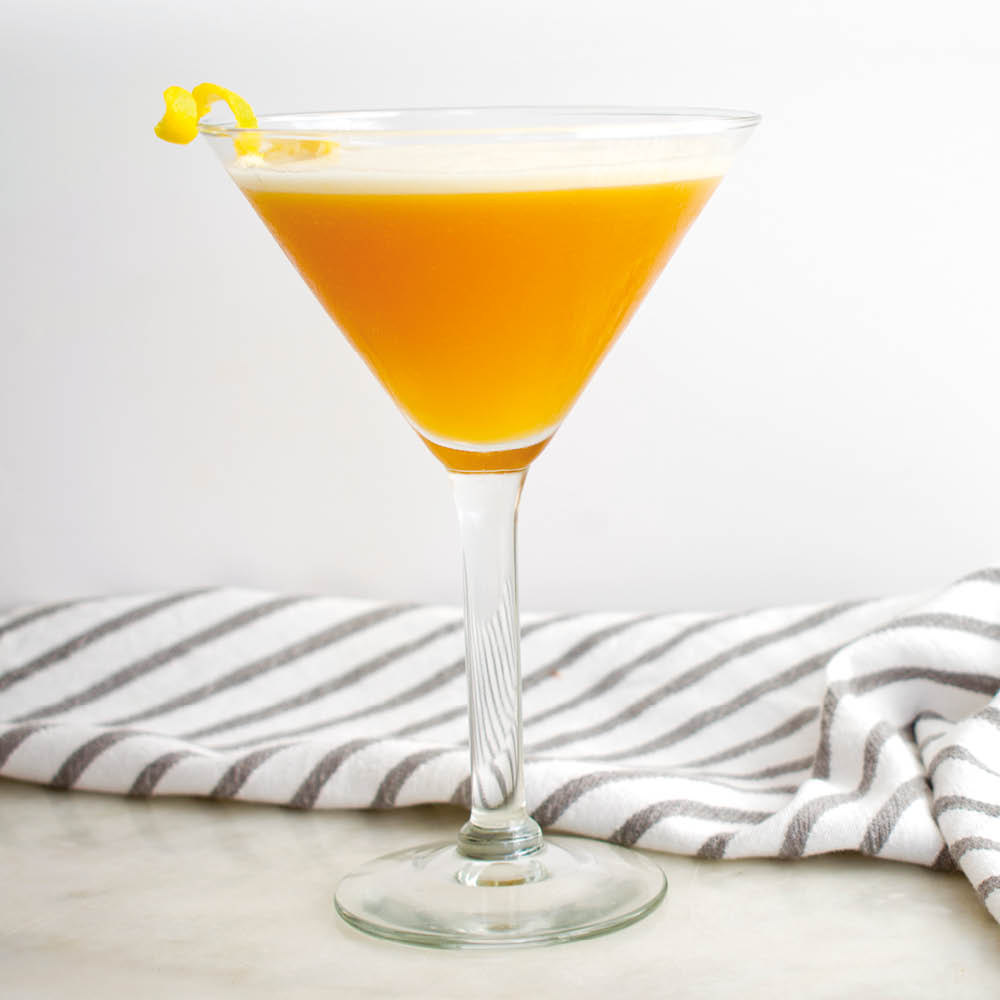
This tenacious eighties classic wasn’t born in France, as you might think, but rather – most likely – in New York. You might have also thought that we’d seen the last of it, but given its debut position on this year’s list, there might be life in the old pineapple-and-Chambord drink yet. Its legacy has certainly been kept alive through various twists and variations – the Alchemist has a fun take, the French Kiss, topped with meringue and garnished with popping candy on a silicone tongue.
21 Boulevardier

Sometimes thought to be a bourbon-based twist on the Negroni, this Parisian classic emerged entirely separately, with an origin story all of its own starring socialite and magazine editor Erskine Gwynne. And while its Italian cousin tends to stick to an equal-parts formulation, modern specs for the Boulevardier call for a greater proportion of bourbon, optionally rye, sometimes served up. It’s bourbon and rocks for chophouse Blacklock, with outposts in London and Manchester, where Old Forester is infused with rosemary butter, joined by Cynar and Select Aperitivo in supporting roles.
20 Vodka Martini

While there have been times when vodka was thought to be, at best, an inferior choice for a Martini, and at worst some kind of crime against cocktails. That’s certainly not the case at the moment, and you’re likely to be given equal choice between the two in any self-respecting establishment. The Vodka Martini’s rise from 25th place on this list attests to that. The Steakhouse Martini at Hawksmoor combines Boatyard Vodka, dry vermouth, Chardonnay, green peppercorn and olive brine to great effect.
19 Naked & Famous
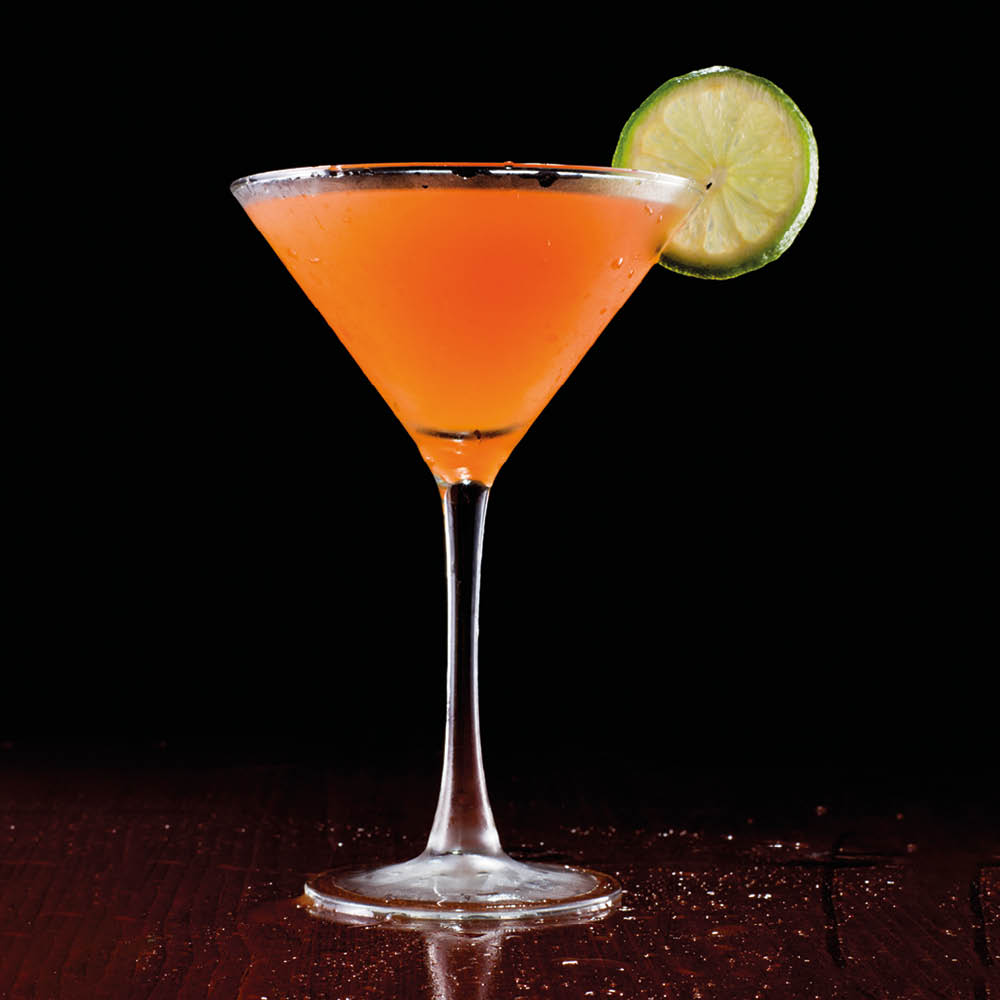
“The bastard love child borne out of an illicit Oaxacan love affair” between the Last Word and the Paper Plane, according to its creator Joaquín Simó, the Naked & Famous combines mezcal with Yellow Chartreuse, Aperol and lime juice. It was created in 2007, when Simó was working at New York’s Death & Co. It’s also, unsurprisingly, the signature cocktail at the agave bar of the same name, in London’s Notting Hill, where it’s made with a blend of mezcal and blanco tequila.
18 French 75
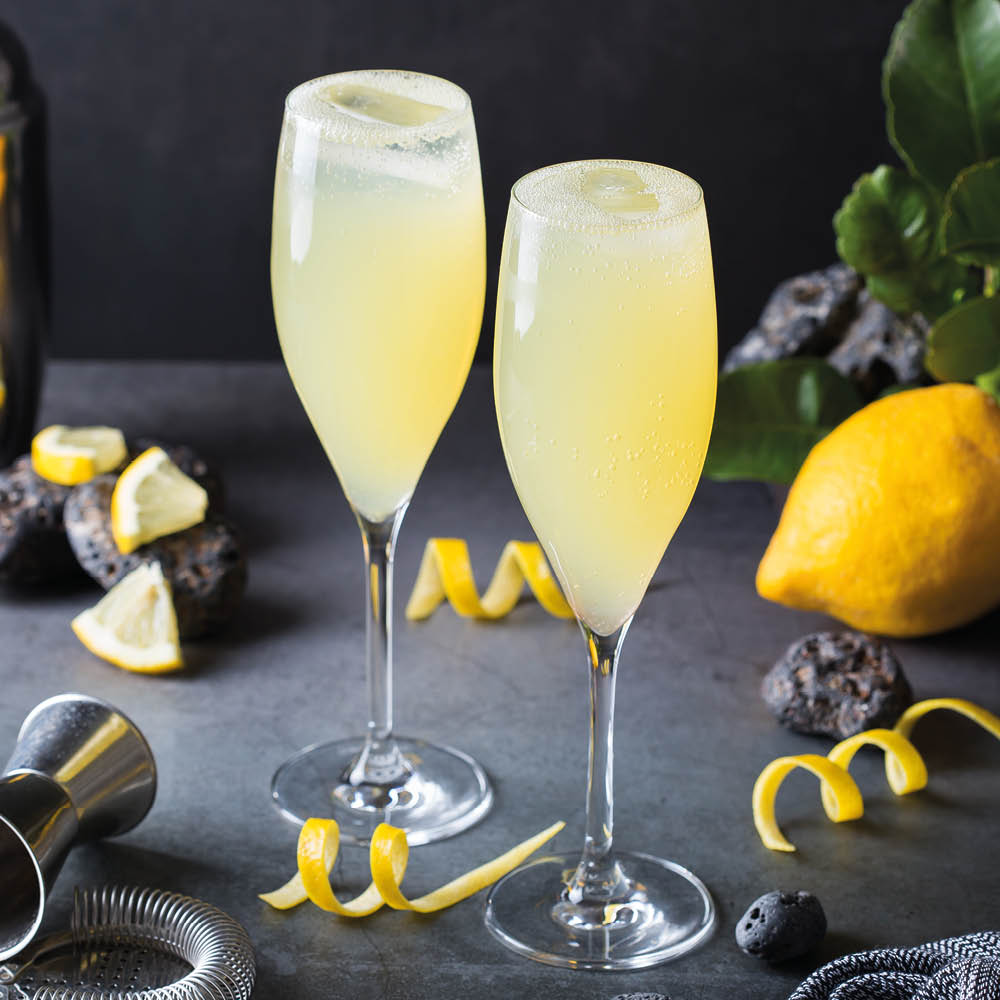
Taking various forms over its many years, the French 75 eventually settled into the drink we know today, a celebratory mix of gin, lemon, sugar and champagne, named after a World War I field gun. Three Sheets in London’s Dalston is synonymous with this classic, with an elevated version that’s made with gin, dry Moscato wine, lemon juice, verjus, orange flower water and sugar syrup. The combination is clarified, carbonated and bottled, ready to serve.
17 Clover Club

While some classics endure through the toughest times, albeit sometimes in slightly questionable form, the Clover Club all but disappeared after a brief initial heyday. Named after the club that would meet at Philadelphia’s Bellevue-Stratford Hotel in the early 1900s, this combination of gin, vermouth, lemon juice, raspberry syrup and egg white has thankfully undergone a modern-day revival. The Clover Club Fizz, an invention of Jake Burger’s from just a few years ago, reimagines this classic as a long drink lengthened with soda, with fresh raspberries rather than syrup.
16 Bloody Mary
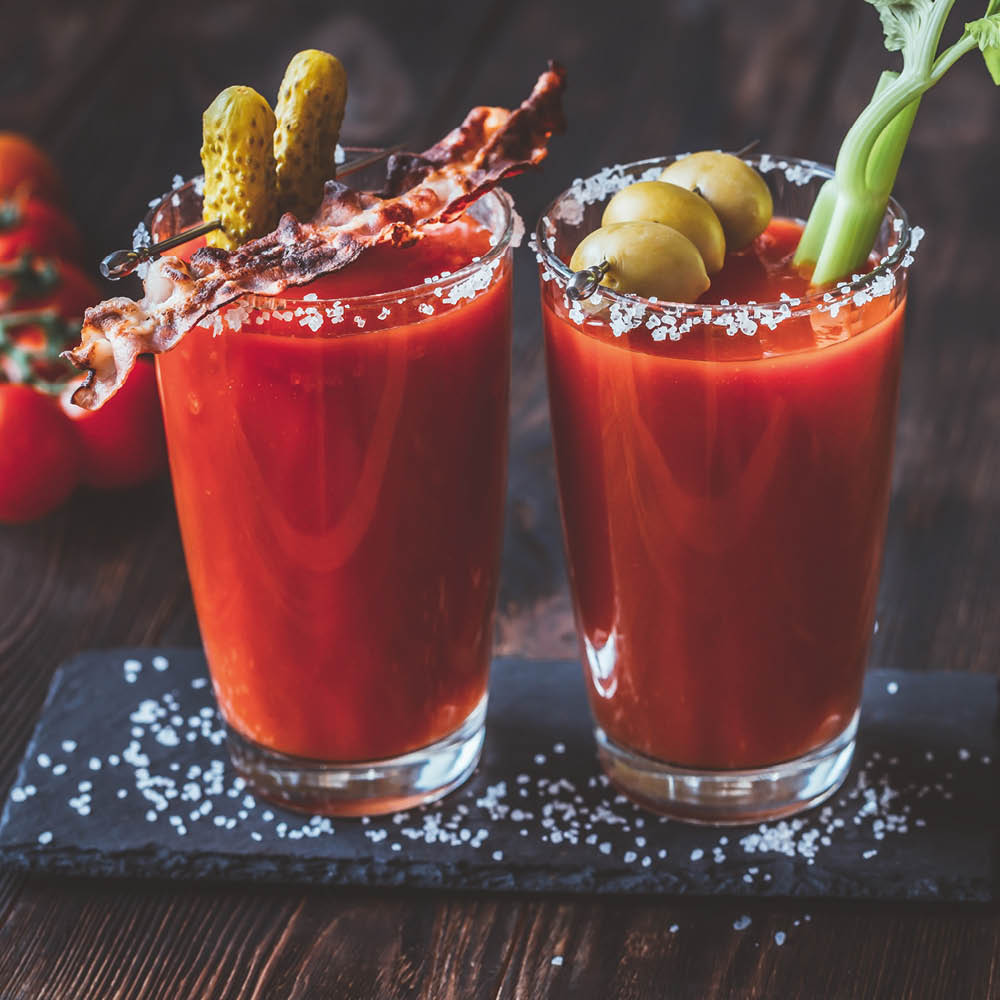
Savoury serves and dirty everything might be all the rage right now, but for blurring the lines between food and drink, we’ve always had the Bloody Mary, even if its base spirit – and even its name – has varied over the course of its history. Call it a Red Snapper, use gin or vodka, but the Bloody Mary endures. Beyond its reputation for Martinis, the Connaught Bar is known for its riff on this classic, thrown and served up, topped with a celery air.
15 Americano
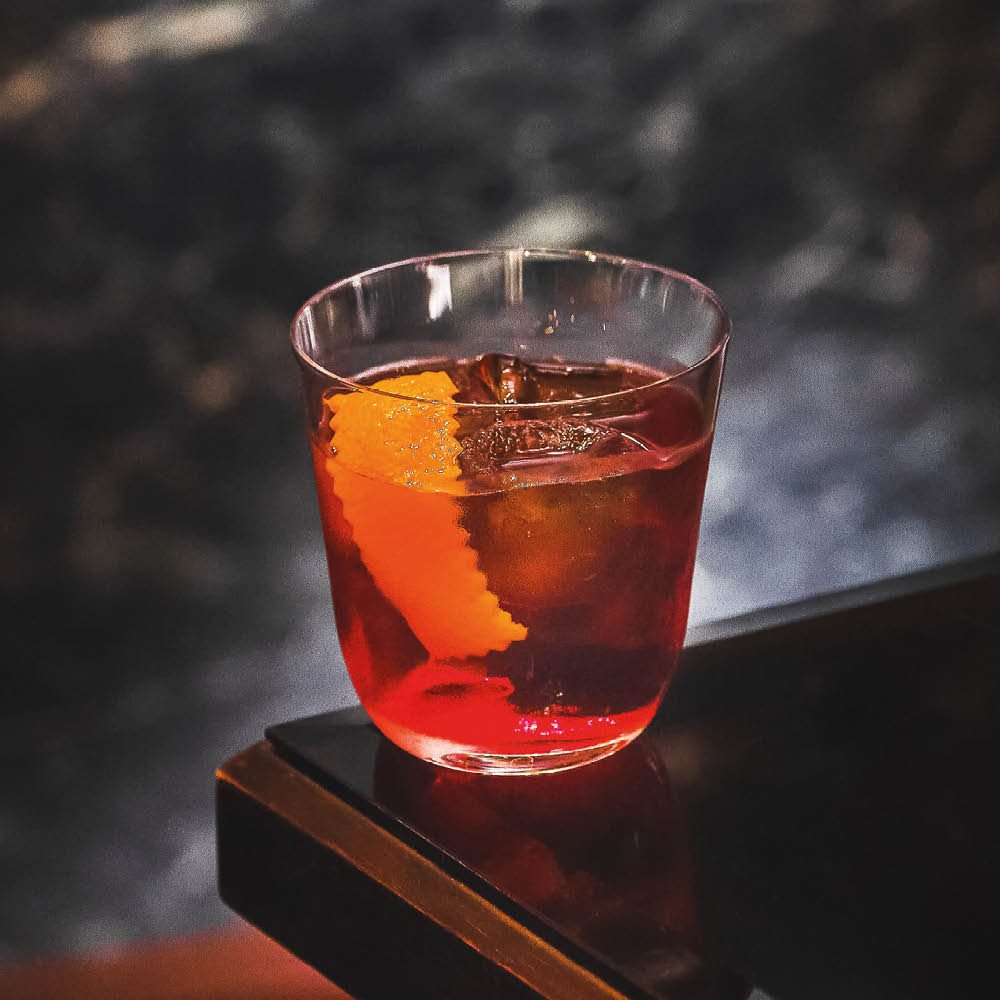
All too often overshadowed by the giant among the classics that it spawned – the Negroni – the Americano makes its rightful debut on the list this year. Arguably more now than its boozier offspring, this light-footed mix of Campari, sweet vermouth and soda is itself an evolution of the soda-less Milano Torino. As the Negroni attests to, Americano riffs abound. For a classic take, it’s hard to beat London’s Amaro Bar, and they’re not averse to creating the occasional twist either, such as a Hibiscus Americano that switches out the sweet vermouth for dry.
14 Mojito
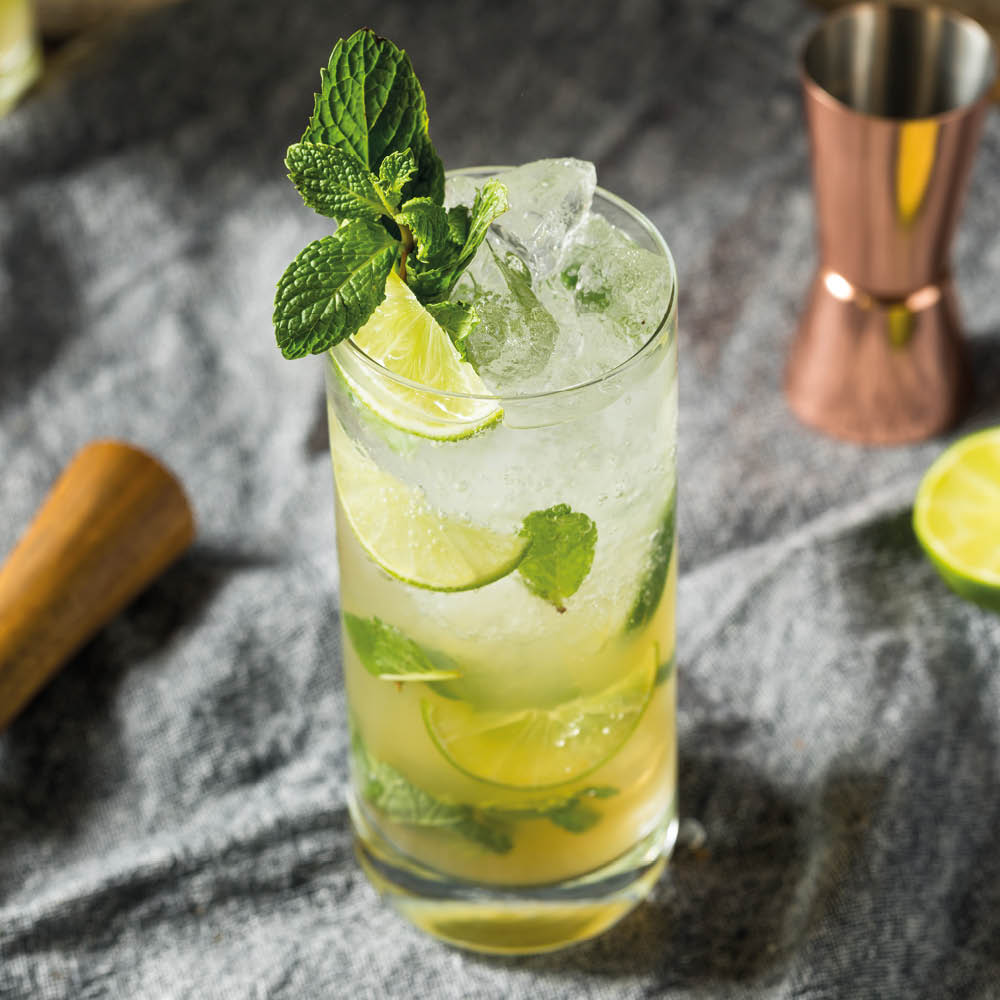
The rise of the Mojito this year, up eight places, might induce a shudder in anyone behind the stick during the mint-crazed mid-2000s, but this classic’s story extends much further back into history, with more than a few origin stories to choose from. It’s also among the most riffed-upon classics out there. The sheer number of Ginger Mojitos sold at Ridley Road Market Bar over the years, for example, must make theirs a de facto modern classic. For a contemporary take, the Mojito at Little Mercies is made with distilled mint, palo santo and lactic lime.
13 Cosmopolitan
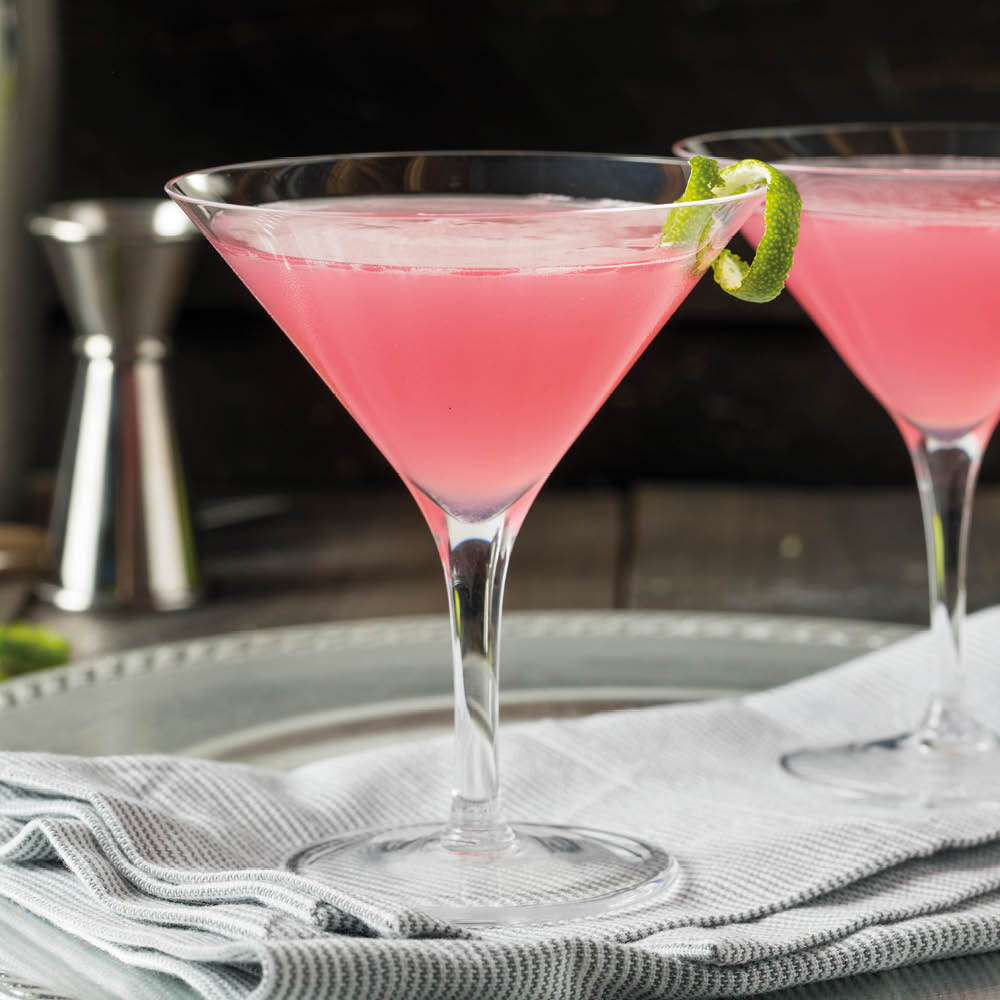
Despite only emerging in the eighties – seventies at the very earliest – we somehow don’t have a definitive answer for who invented the Cosmo, but rather a few fiercely-contested claims. Credit definitely goes to Sex and the City for burning it into our collective consciousness in 1999 though, when it was first mentioned on the show. For a refined, 21st-century take, look no further than Kwant in London’s Mayfair, where the carbonated Cosmo Highball adds notes of green cardamom, oat and timur berry.
12 Manhattan
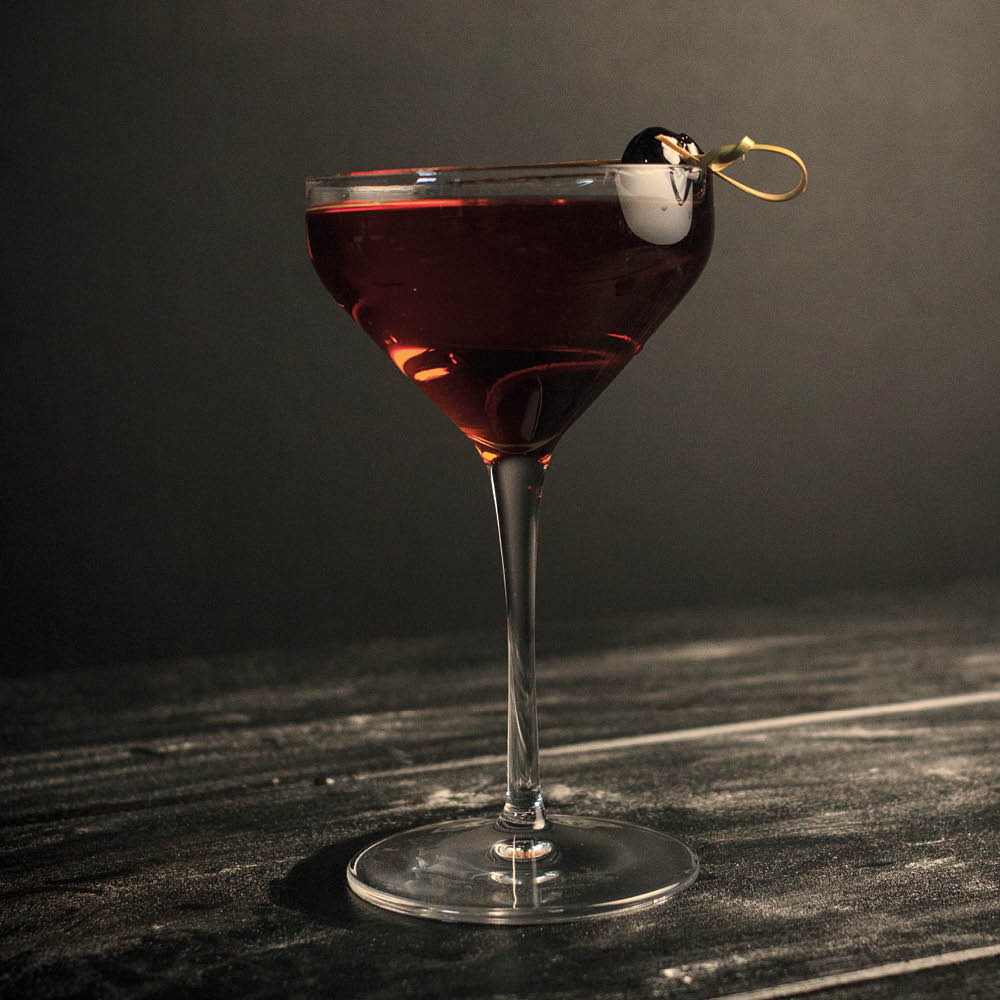
This venerable whiskey classic seems to be getting the recognition it deserves at the moment, climbing a respectable 16 places on this year’s list. It also has some of the best – inconclusive – origin stories in the classic cocktail canon, one involving Winston Churchill’s mother. At Satan’s Whiskers in London, where the menu changes daily, there’s always one on the list. 11th & Social in Norwich, meanwhile, has been cracking out some interesting variations recently, including one with spent coffee-infused Evan Williams Bourbon and cherry stone orgeat.
11 PornStar Martini
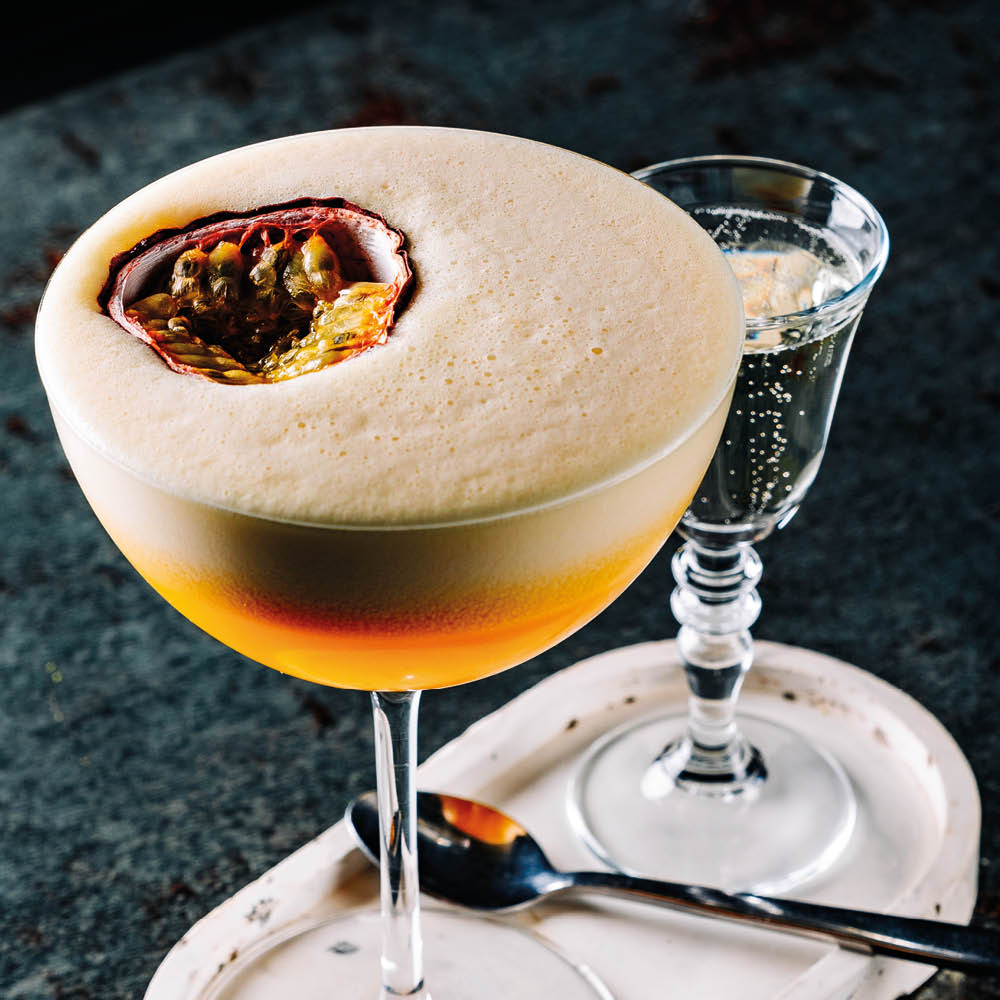
Already wildly popular from the first time its creator, the late, great Douglas Ankrah, served these at London’s Townhouse in 2002, it was only recently that everyone went really crazy for the Pornstar Martini, in its home town in particular. Party bar group The Cocktail Club taps further into the zeitgeist with its Pornstar Puff, low-cal and alc-free, although there’s the option to chuck in a shot of Absolut Mango. And there’s a full-strength classic version on the list too, of course.
10 Paloma
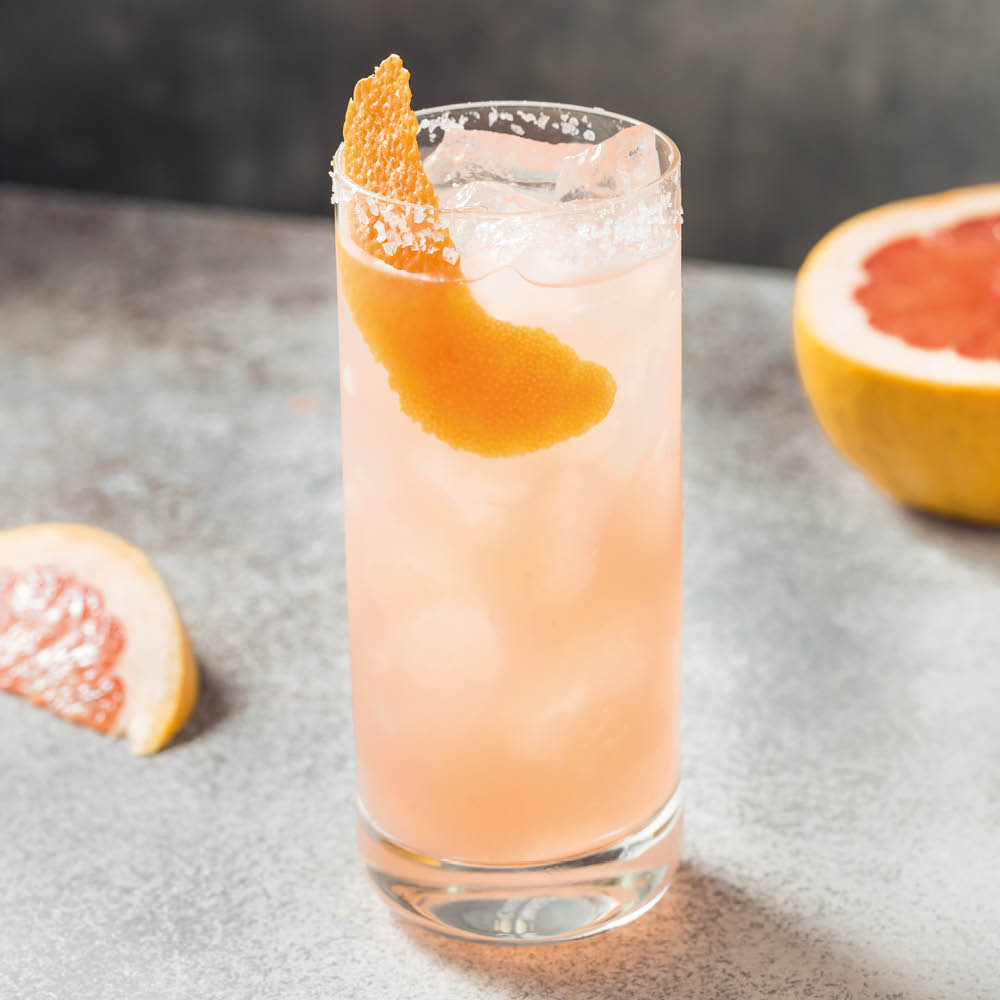
As far as tequila cocktails go, the Margarita might dominate globally, but in Mexico the serve has long been somewhat simpler, with nothing more than grapefruit soda Squirt and maybe a squeeze of lime. As the rest of the world has caught on in recent years, the humble Paloma – “dove” in Spanish – has been variously elevated and riffed upon, with the base switched out for mezcal, for example, or spice added. The refined take on the classic at NoMad London’s Side Hustle opts for both tequila and mezcal, and a combination of grapefruit juice and grapefruit soda too.
9 Daiquiri
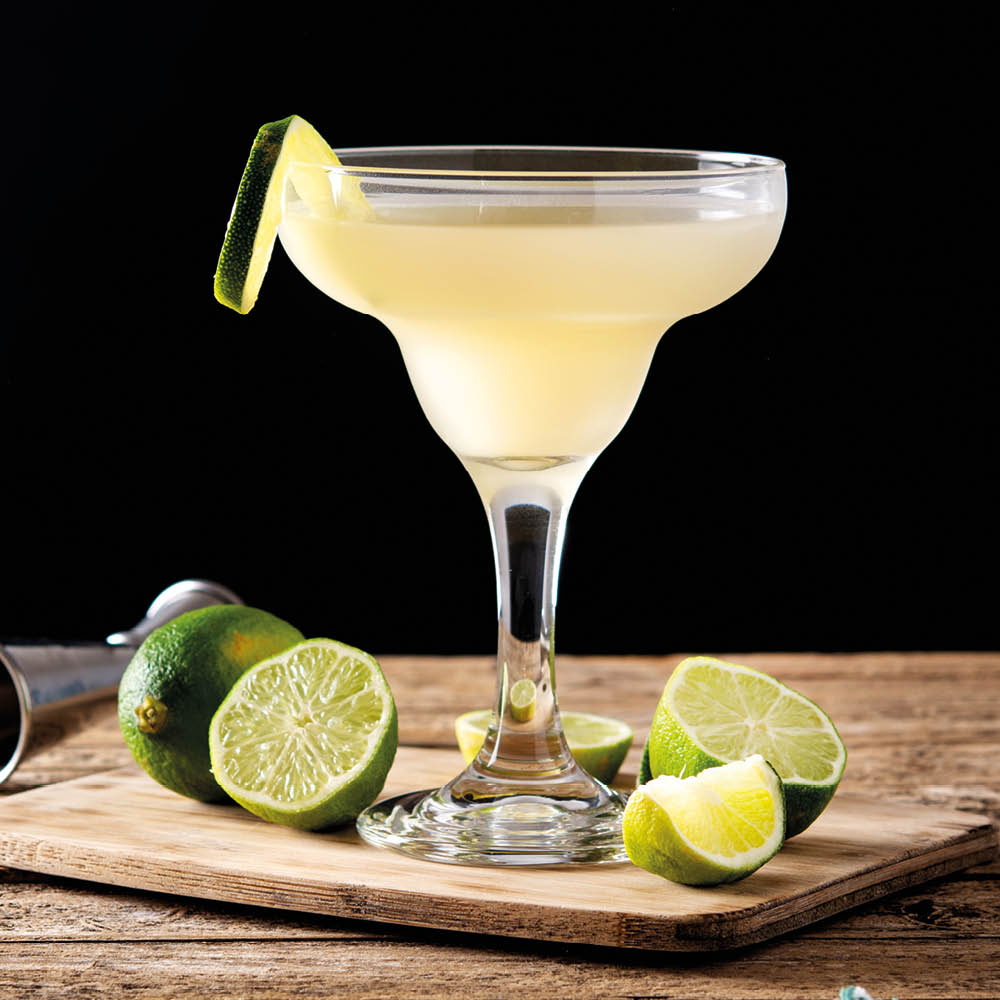
This illustrious rum classic has spawned all manner of twists in its time, from the sublime (El Floridita’s Hemingway Daiquiri) to the ridiculous (too many to name here), while the classic combination of rum, lime and sugar endures too. There’s no neat origin story here, although it dates back to at least the late 1800s, if not before. Classic contemporary variations include Audrey Saunders’ Old Cuban with mint and champagne, as well as Kevin Armstrong’s Dry Daiquiri with Campari and passion fruit syrup. Stop by London’s Trailer Happiness where there’s a full Daiquiri Selection, with six to choose from.
8 Amaretto Sour
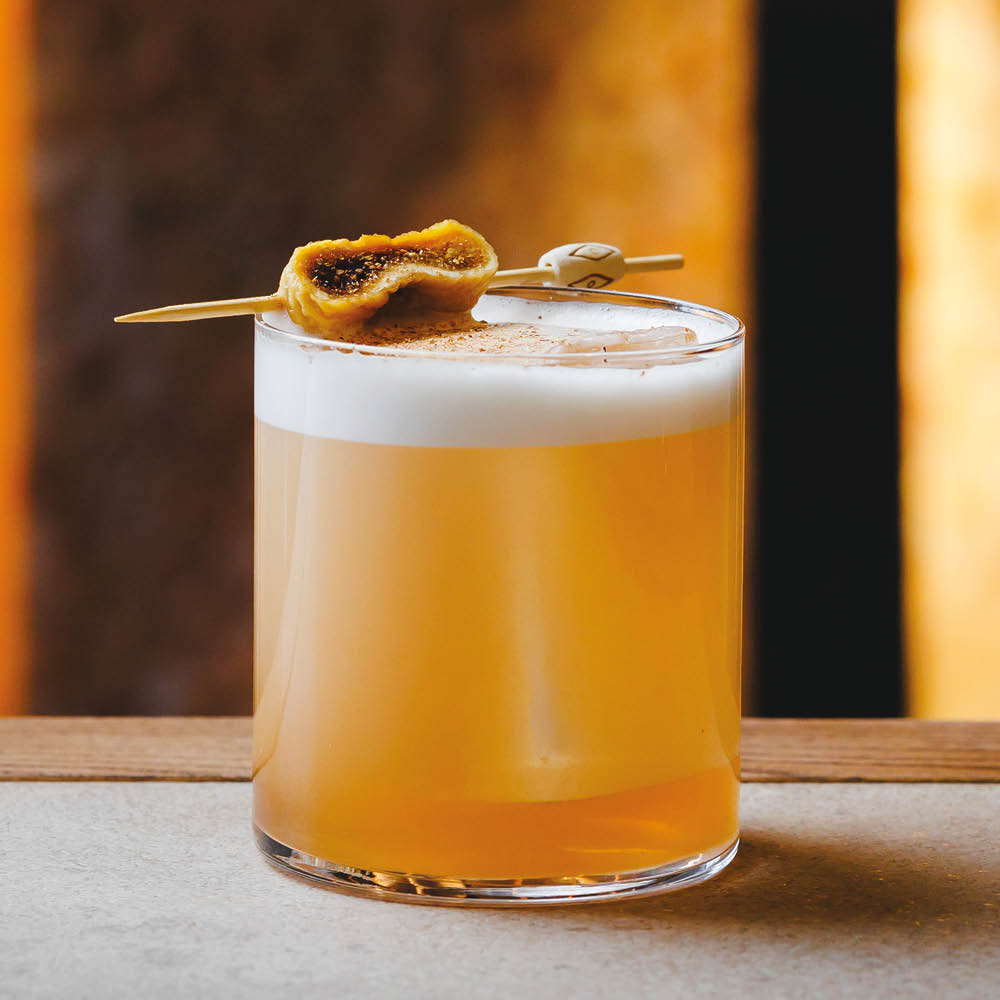
This mid-seventies classic, perhaps not the most perfectly balanced in its original form, and not helped by the prevalence of sour mix in the eighties, received a shot in the arm in 2012. In one simple move, Portland bartender Jeffrey Morgenthaler gave this a serious-drink makeover, adding cask-strength bourbon into the mix. That’s the thinking behind the version on the list at Mother Mercy, below Newcastle’s Cloth Market, where it’s made with Luxardo amaretto and Four Roses bourbon.
7 Whiskey Sour
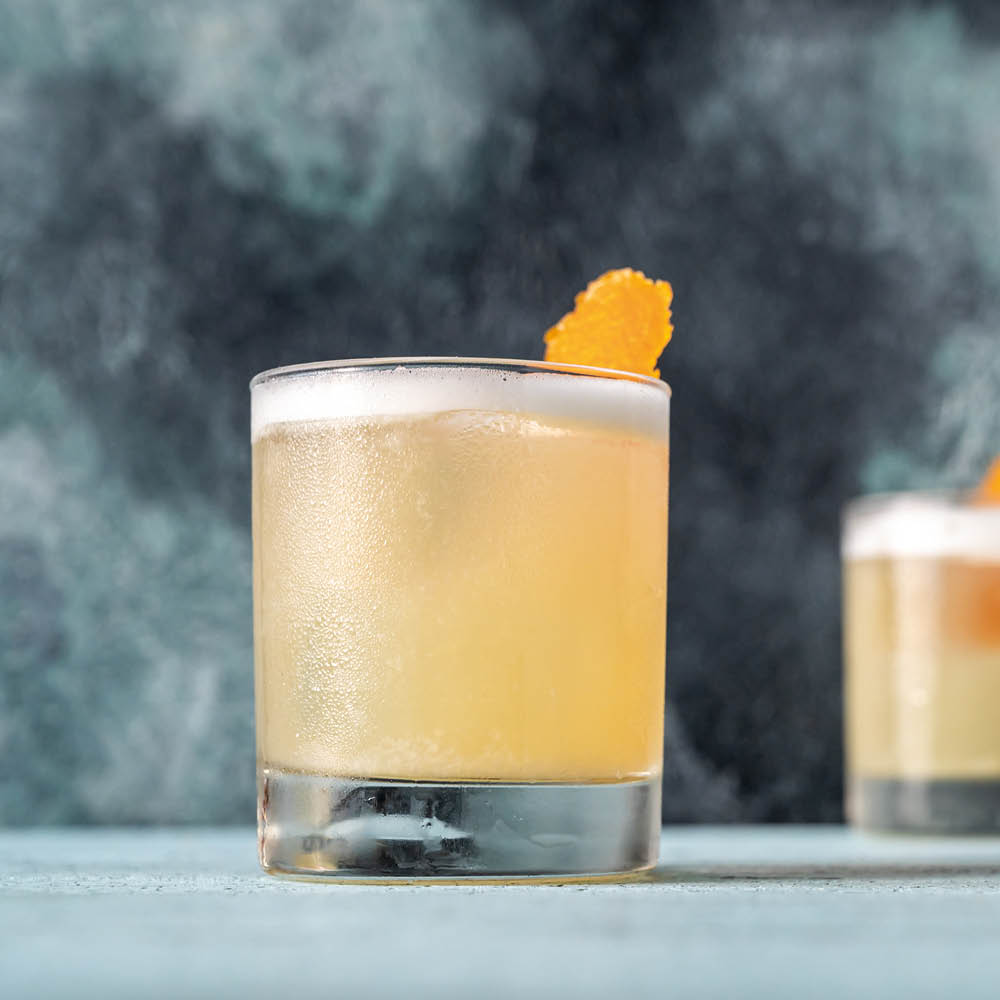
If it ain’t broke… This undisputed champion of the Sours, relatively unchanged in the many decades since its origins in the mid-1800s, climbed a massive 16 spots in this year’s list, up from 23. It’s a good time for whiskey classics in general, it seems, with the Manhattan making a big leap this year too. New London whiskey specialist bar Odyssey uses a citrus batch in its Whiskey Sour to minimise waste, as well as the bar’s own plant-based egg white alternative.
6 Aperol Spritz
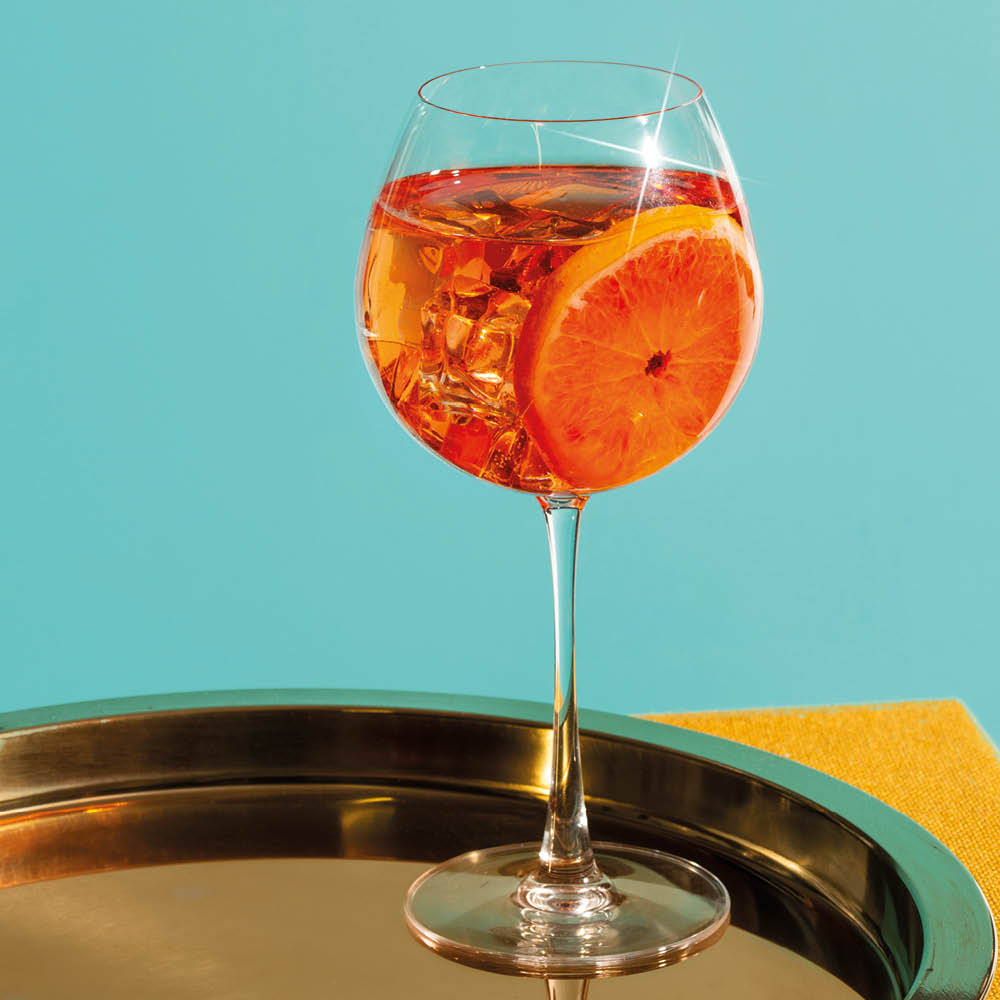
With its moderate abv and Instagrammable hue, the Aperol Spritz might have been created in the fifties, but it’s unquestionably a drink for our time. Not quite as ubiquitous as it was a few years ago, it remains an aperitivo-hour staple. The Spritz itself predates the invention of Aperol, first unveiled in 1919, becoming the drink’s signature serve a few decades later. London’s Funkidory doubles down with its Banaperol Spritz, combining banana-infused Aperol with banana-skin oleo, to which pet-nat wine is added.
5 Dry Martini
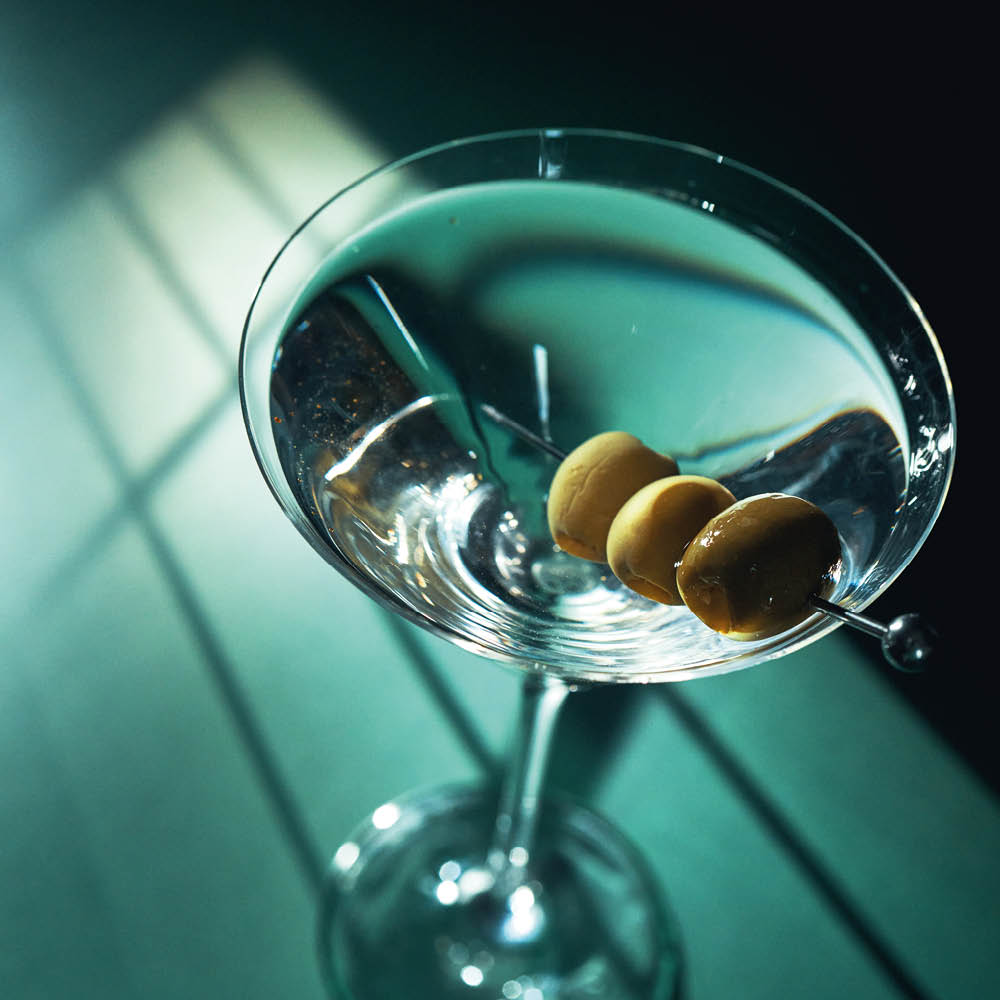
There has quite possibly never been a better time to be a Martini drinker. This elegant classic has had quite a journey, evolving from sweeter incarnations likely based on Old Tom gin and sweet vermouth, and weathering the era of sickly-sweet eighties concoctions created in its name. Today, the emphasis is on subtle variations and freezing-cold pours direct from the freezer. Dukes remains the iconic spot, although we’re spoilt for choice, really. Among the finest is Viajante 87’s Glacier Martini, slightly modified with a touch of grape and plum, and served – exceptionally cold – with a smoked olive.
4 Espresso Martini
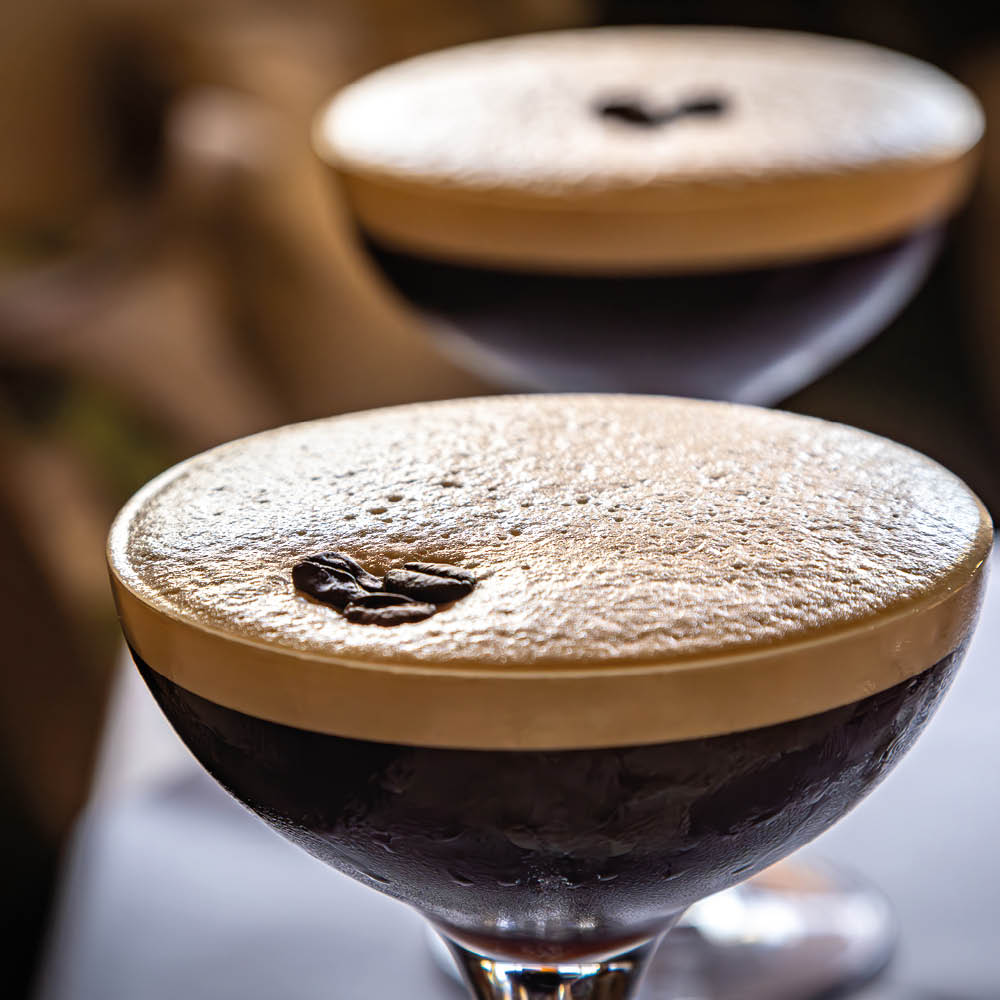
As if waiting for its morning coffee to kick in, the Espresso Martini had a relatively slow start before exploding in popularity in recent years. The original functional cocktail – the legend goes that the late, great Dick Bradsell created it in the eighties in response to a request for “something that’s gonna wake me up, then fuck me up” – it’s adaptable, deceptively simple, and highly effective. It’d be hard to find a cocktail list without some variation of this caffeinated classic nowadays, but where better to drink one faithful to the original than at Soho’s El Camion, where Bradsell headed up the bar?
3 Old Fashioned

An antidote to the increasingly fancy cocktails of its time, this no-nonsense combination of whiskey, sugar and bitters remains a cocktail-list staple nearly a century and a half later. It continues to defy its name too, through countless, sometimes distinctly modern, variations on cocktail lists around the world, with none of its key elements off-limits for experimentation. For one that hews close to the original, there’s the blend of Evan Williams and Whistlepig, maple and bitters found at Hideout in Bath.
2 Negroni
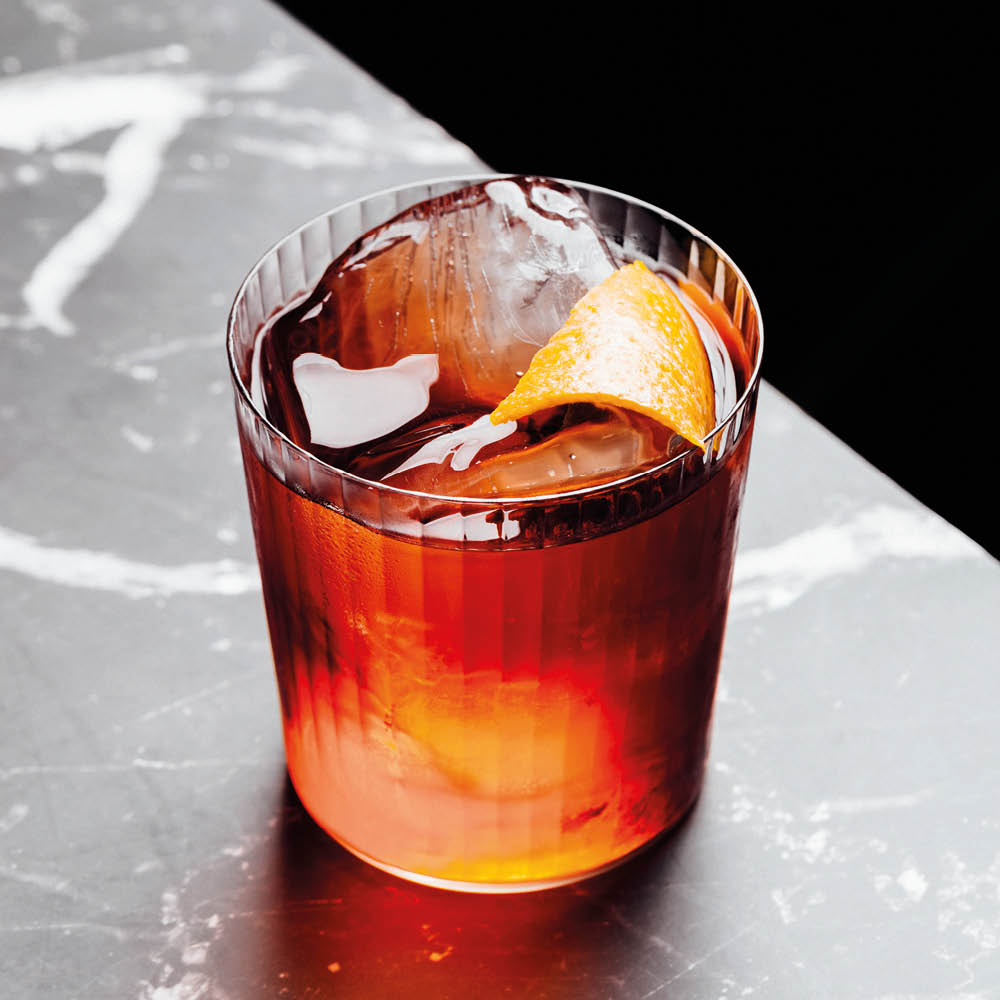
Aperitivo-style drinks aren’t going anywhere, and foremost among them is the Negroni, that bittersweet equal-parts mix of gin, Campari and sweet vermouth. Its origins are contested, but it likely emerged as an evolution of the Americano, in turn a twist on the Milano Torino. The classic Negroni is front and centre on the list at Italian bar Hey Palu in Edinburgh, and part of a Negroni flight there alongside a twist made with bitter bianco and strawberry vermouth.
1 Margarita

It’s no wonder that the Margarita continues to top this list, bolstered no doubt by the ever-growing popularity of tequila, and agave spirits in general, not to mention the rise of variations such as the Picante. In all likelihood an evolution of the pre-Prohibition Daisy, you’ll just as likely find the original triple sec version nowadays as you will the Tommy’s – a deceptively simple combination of tequila, agave syrup and lime juice. That’s the version on the list at OG Mexican restaurant Cafe Pacifico in London. For a more contemporary take, there’s Hacha’s crystal-clear Mirror Margarita.


